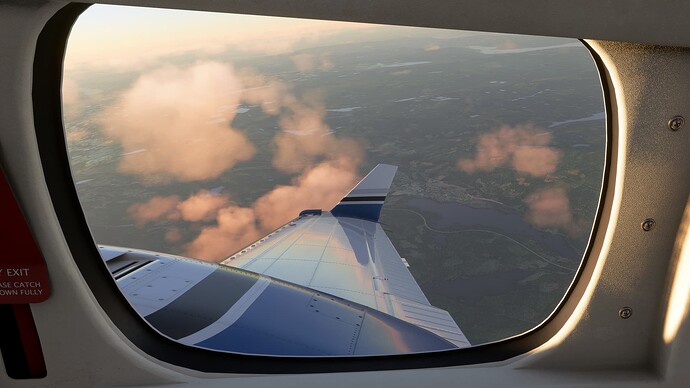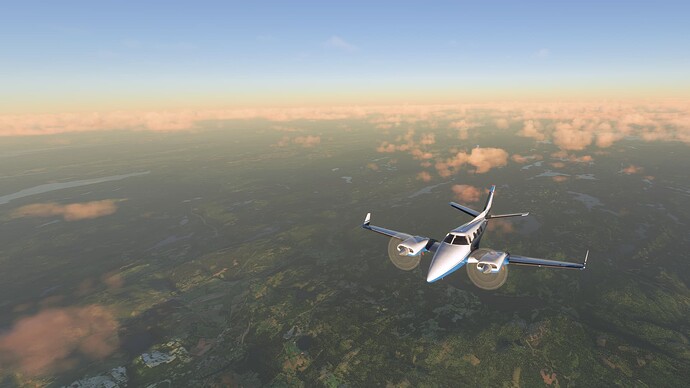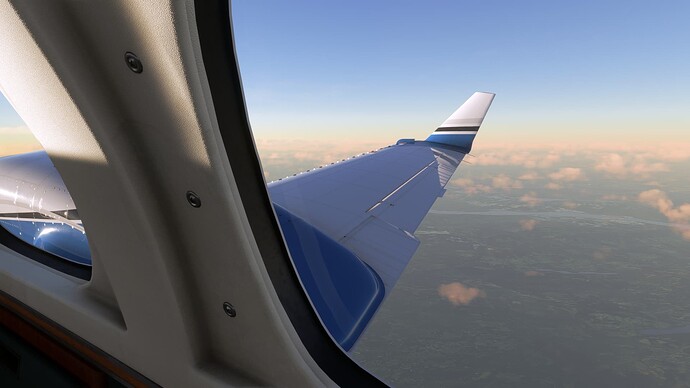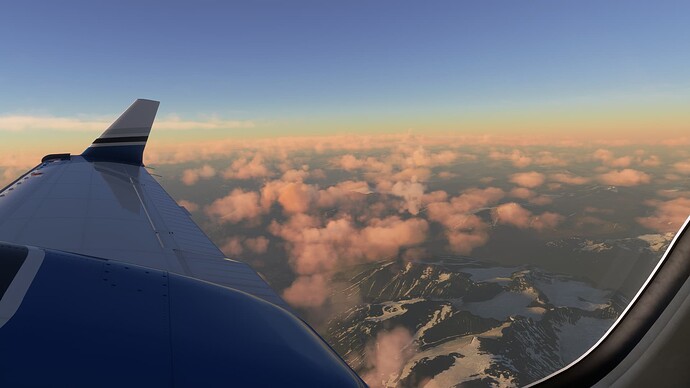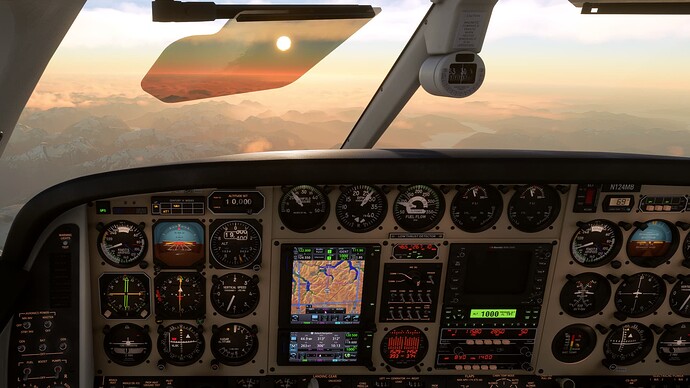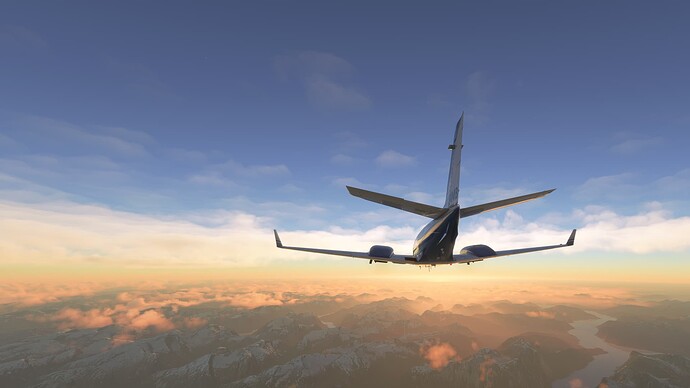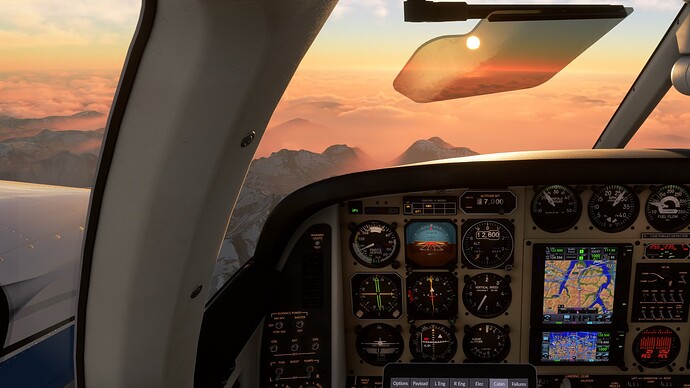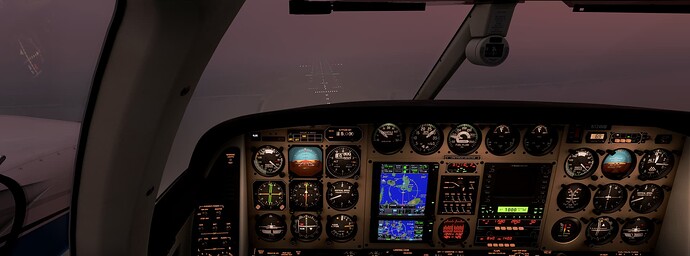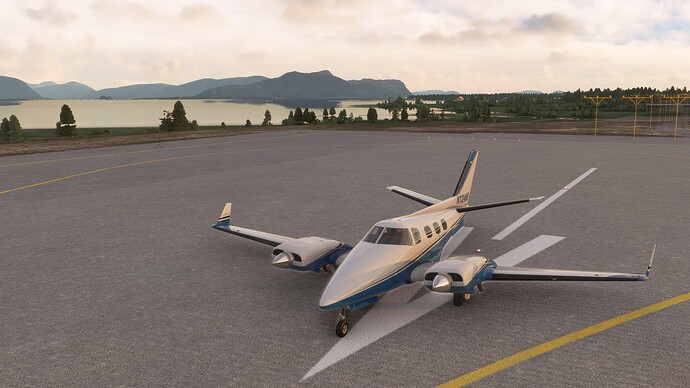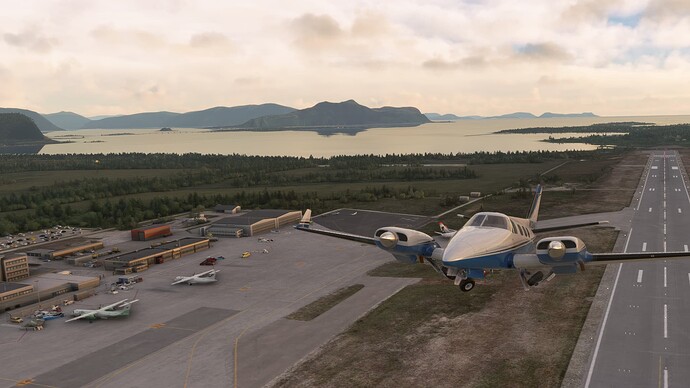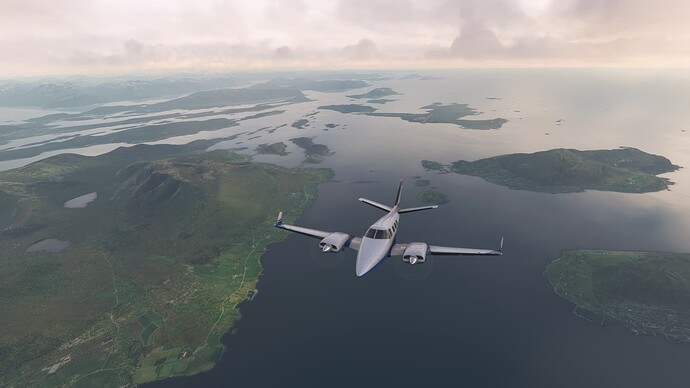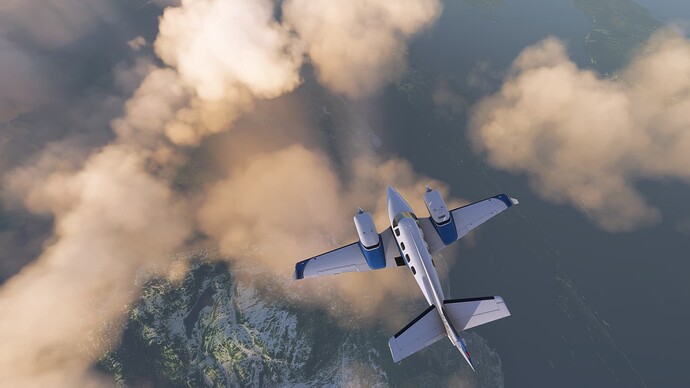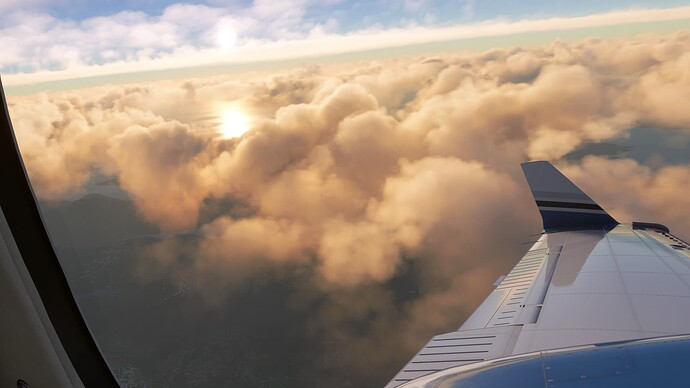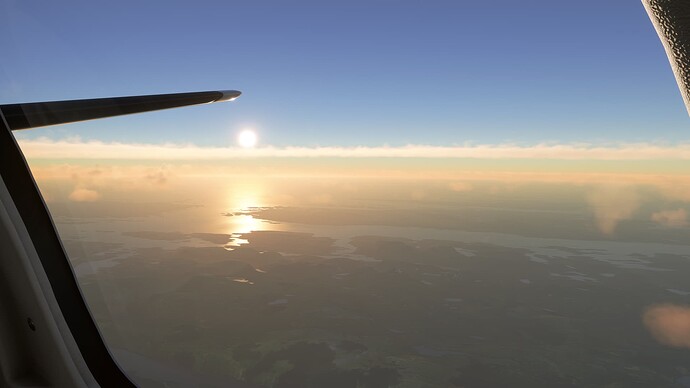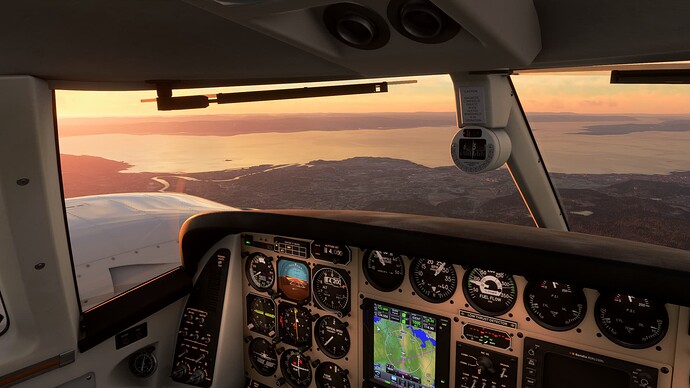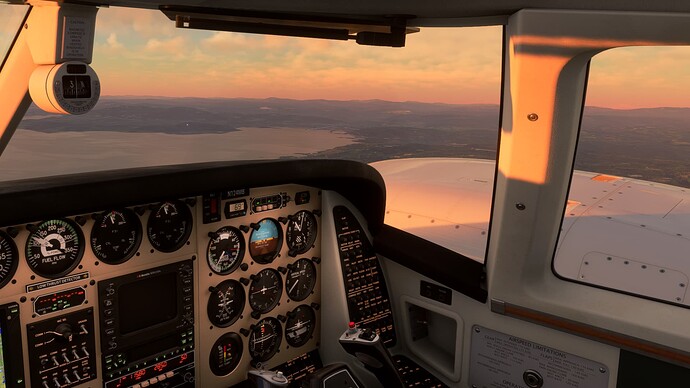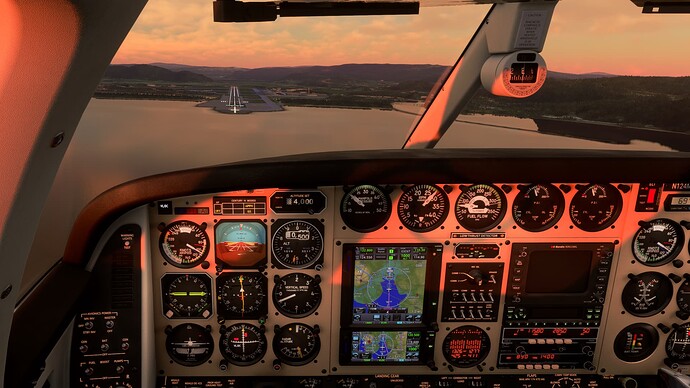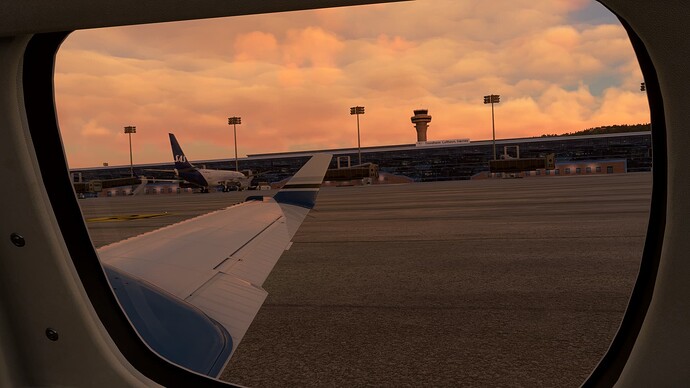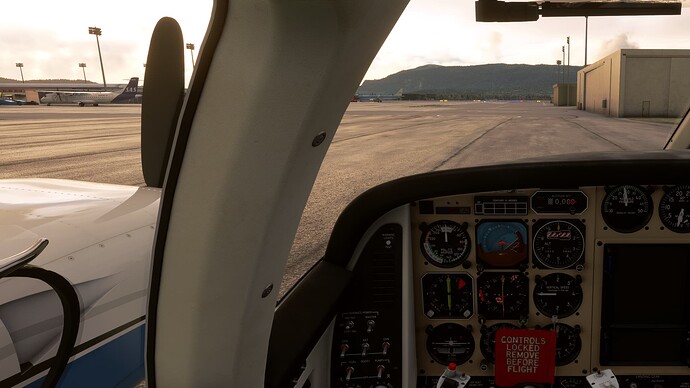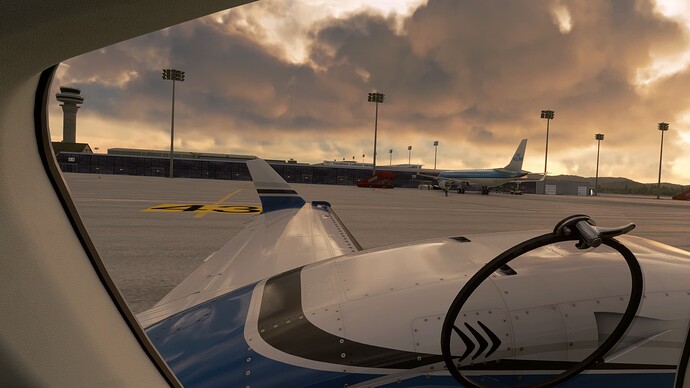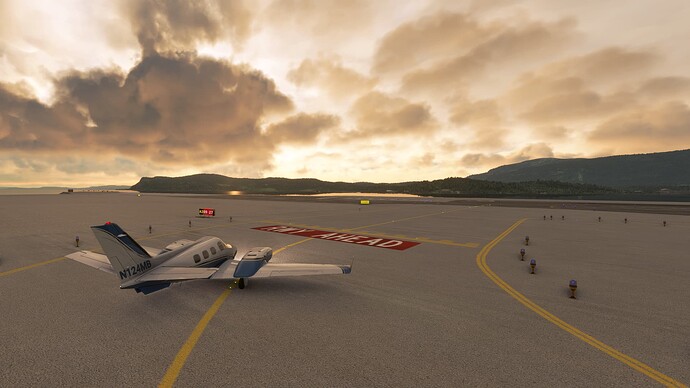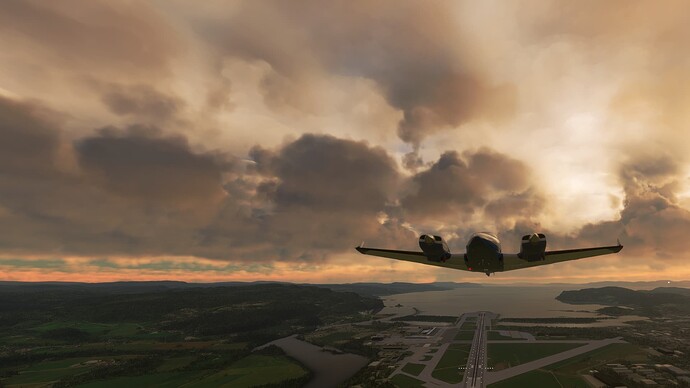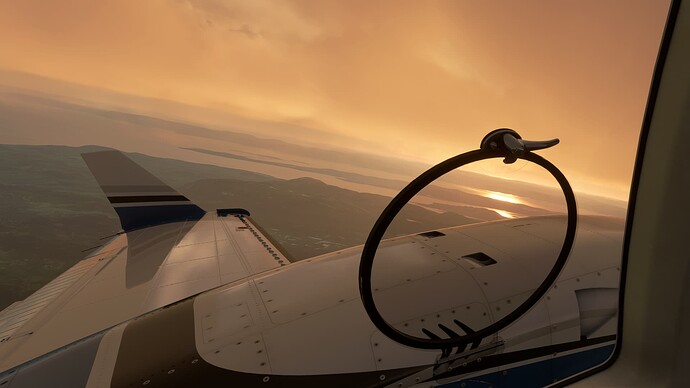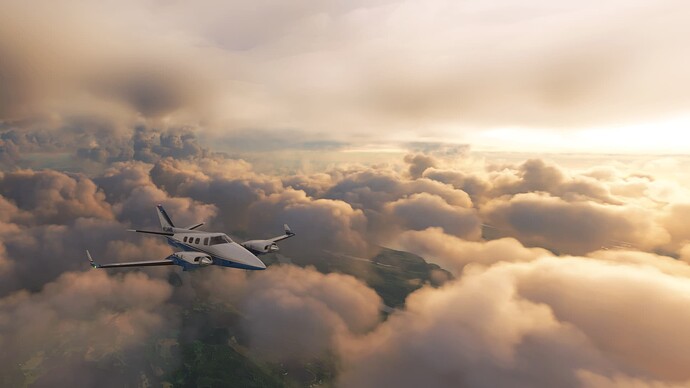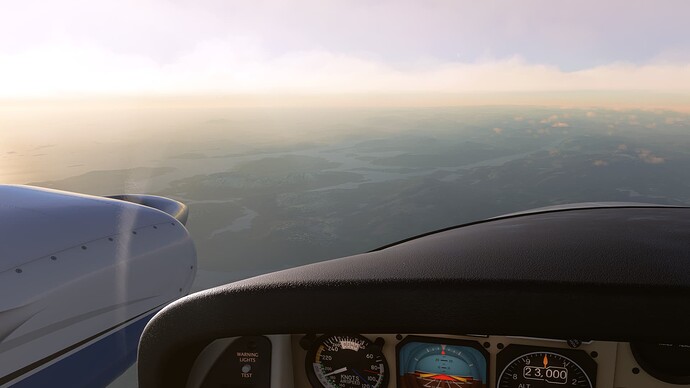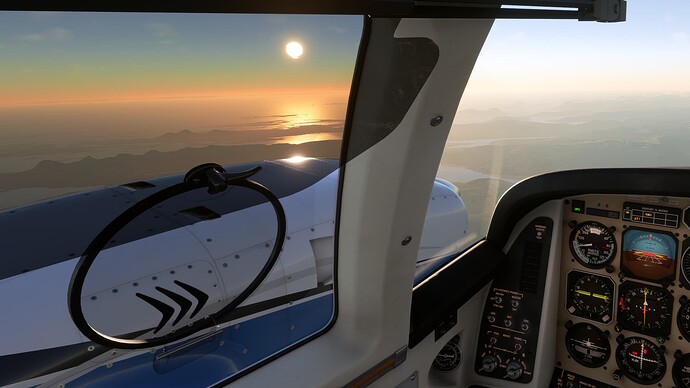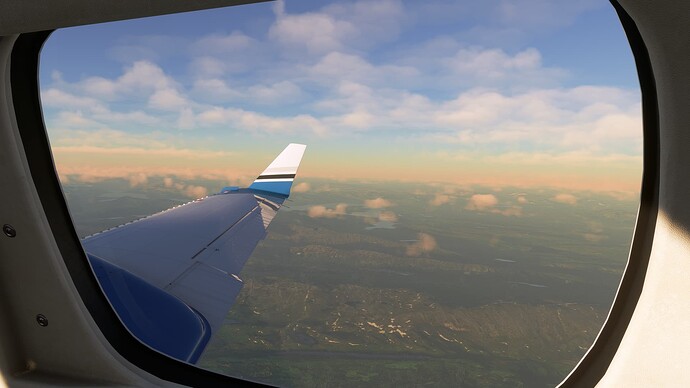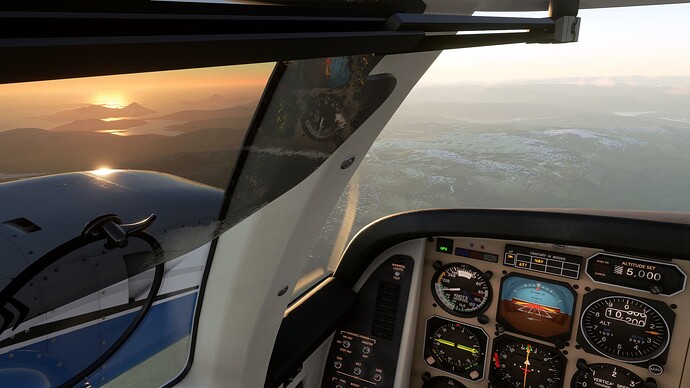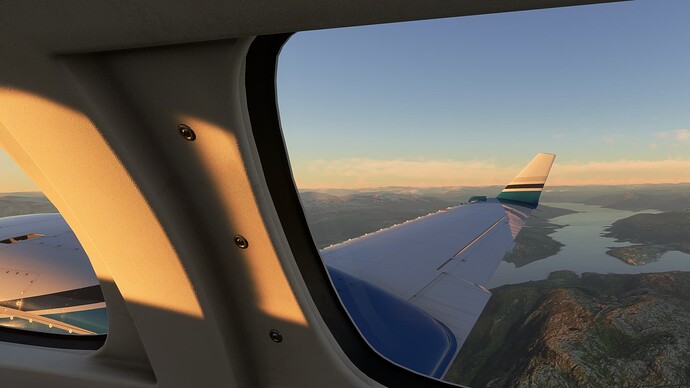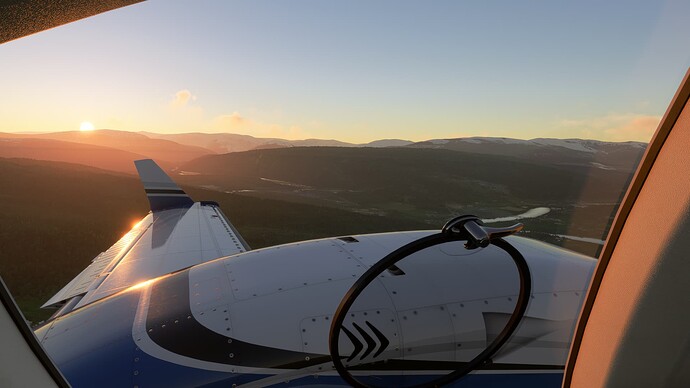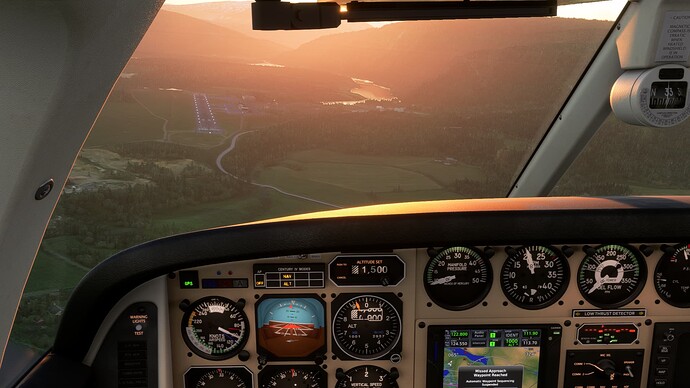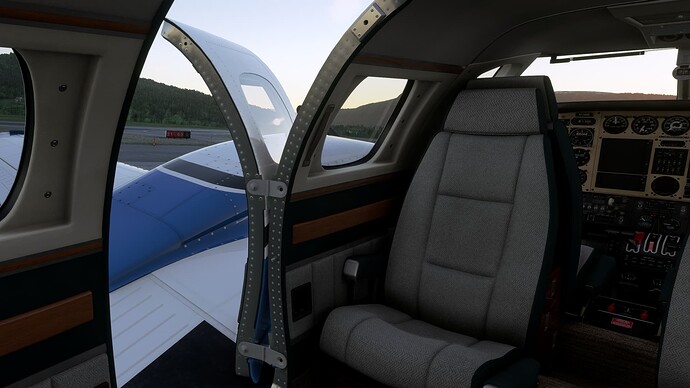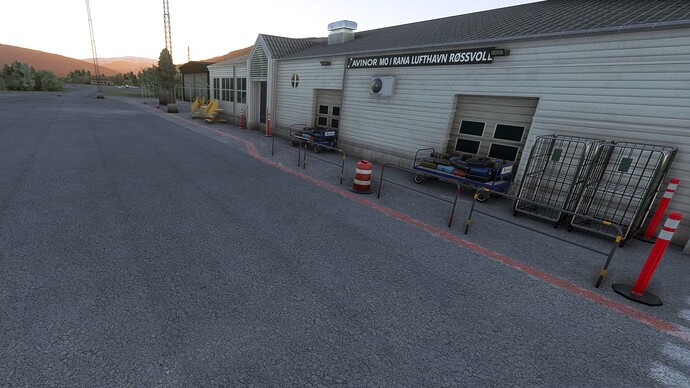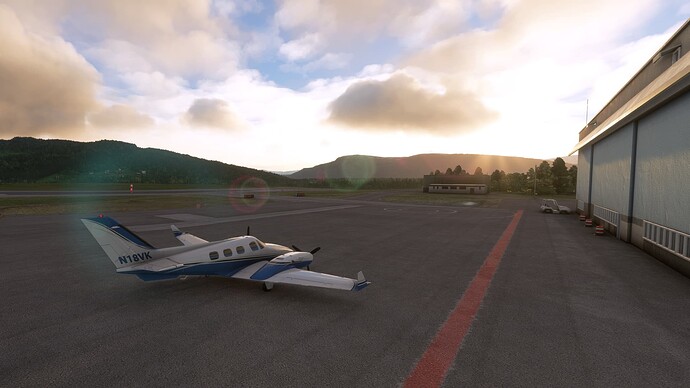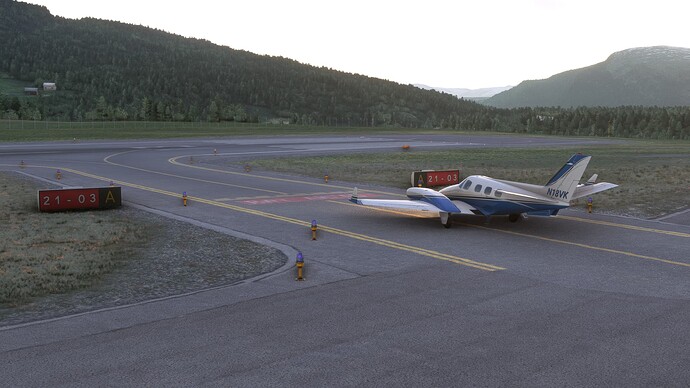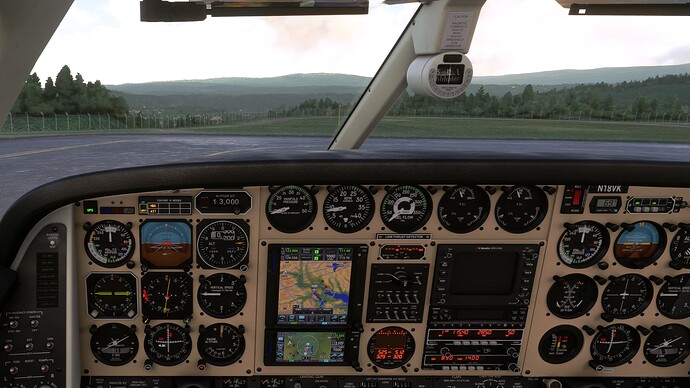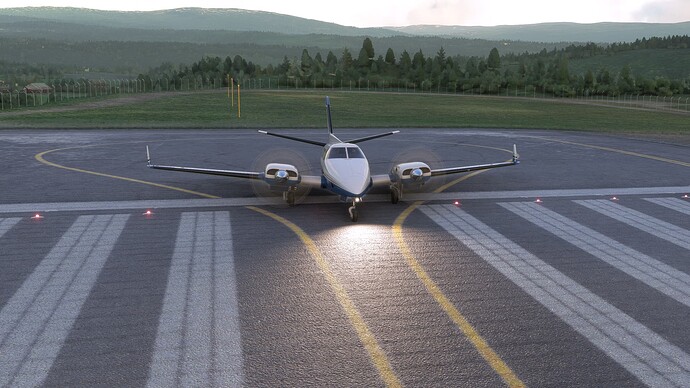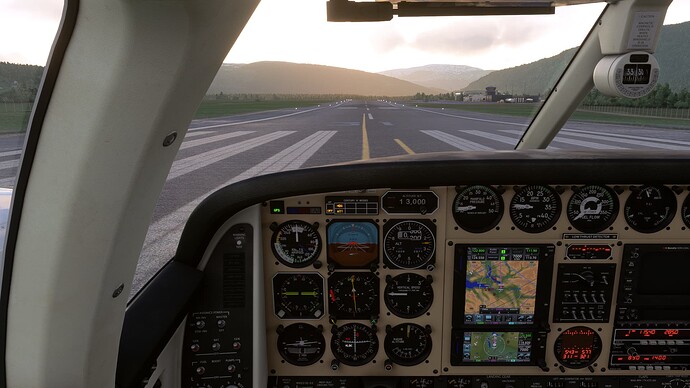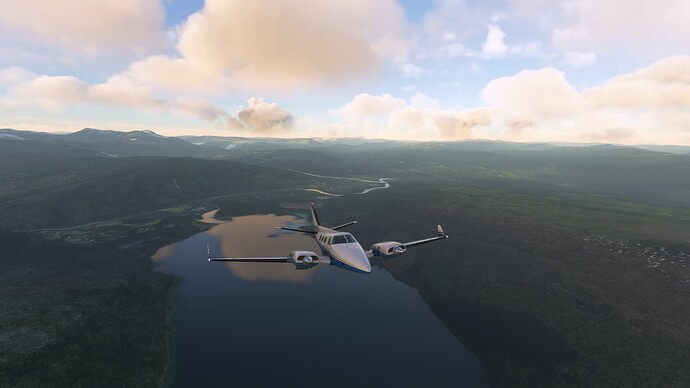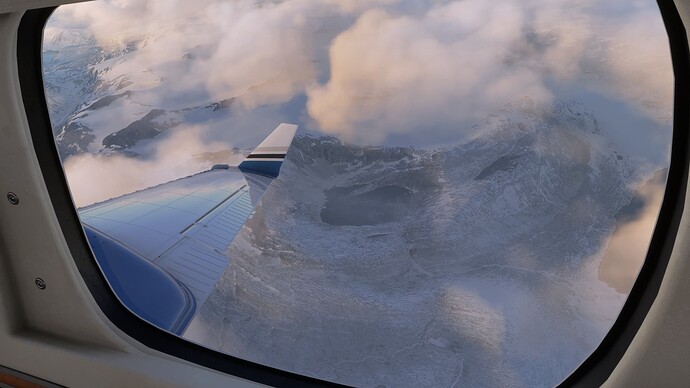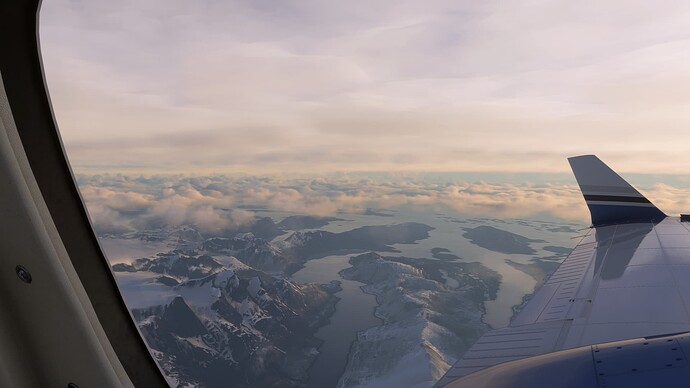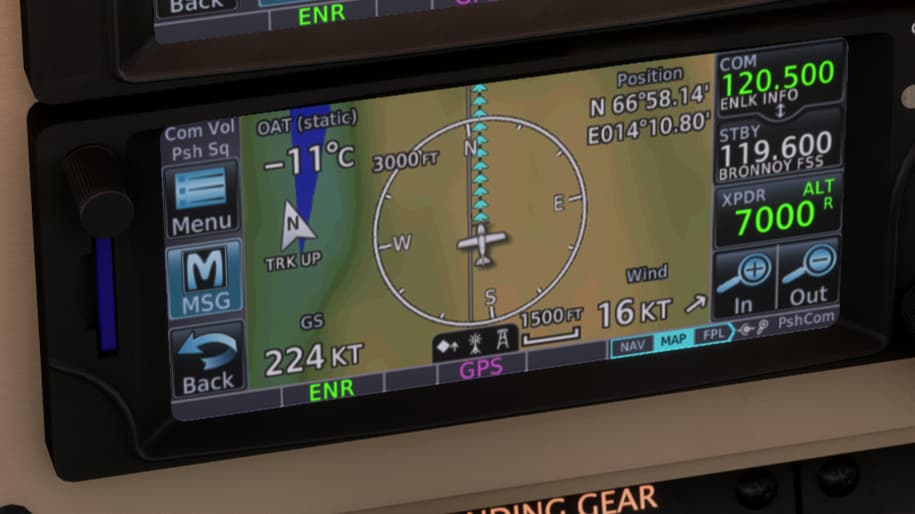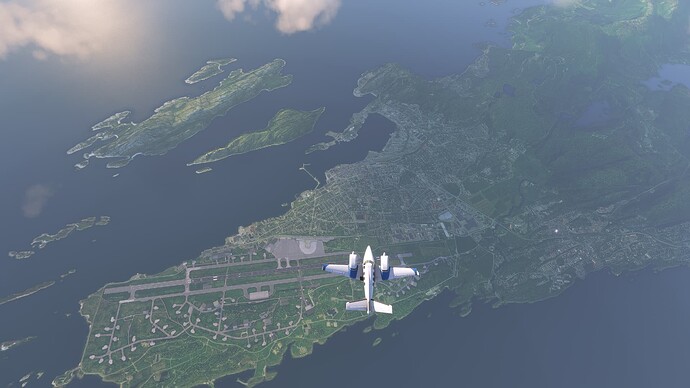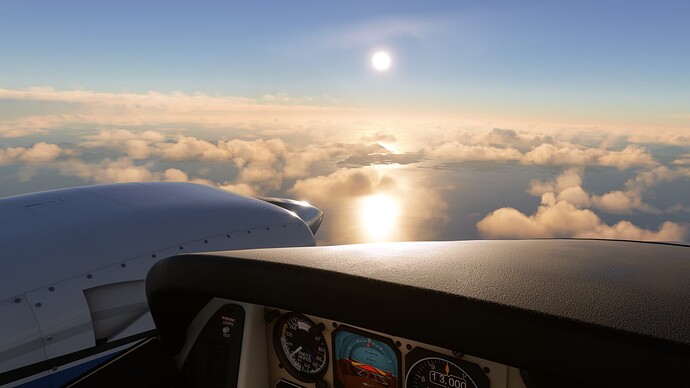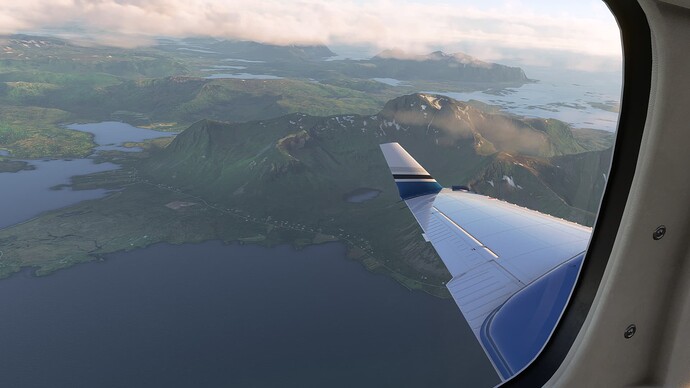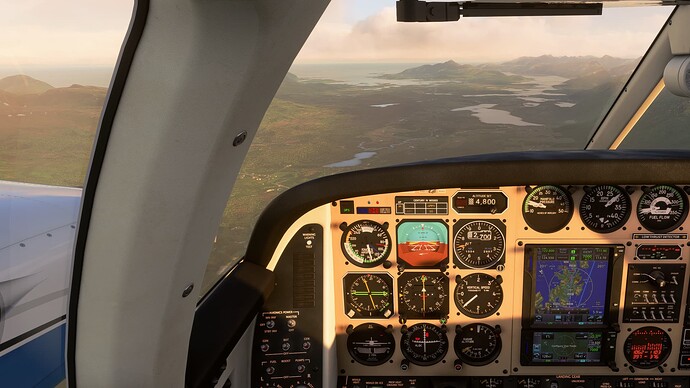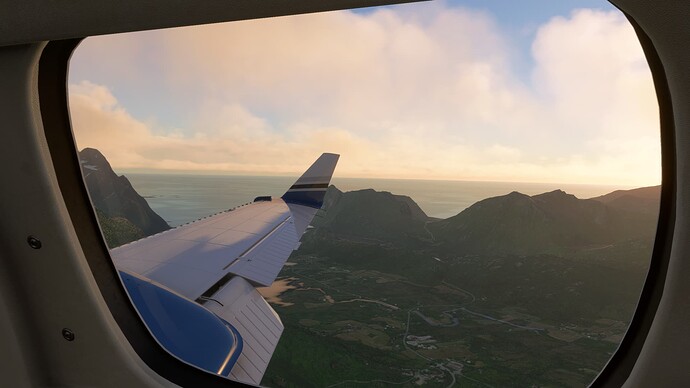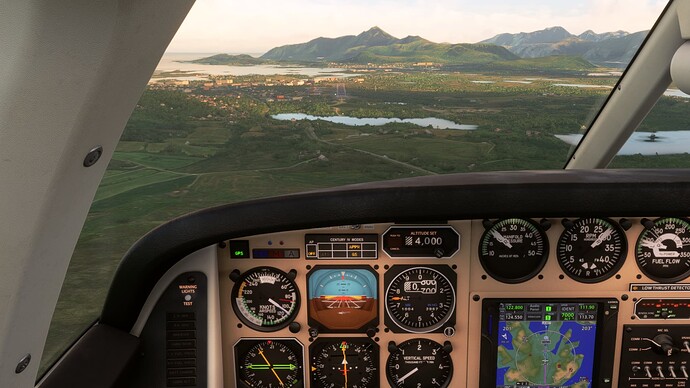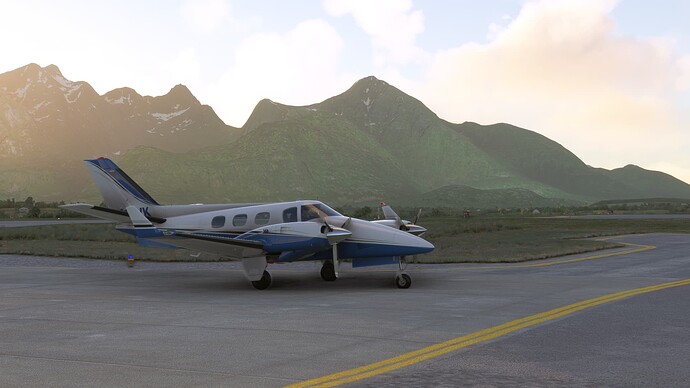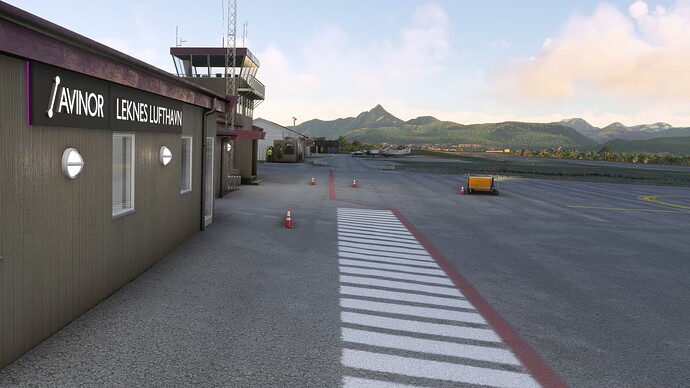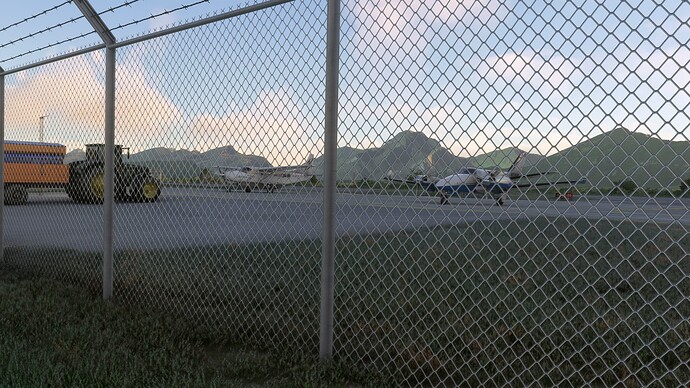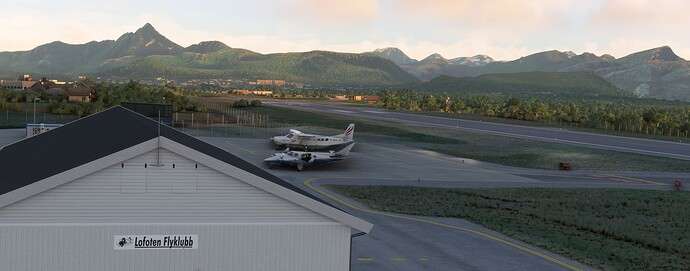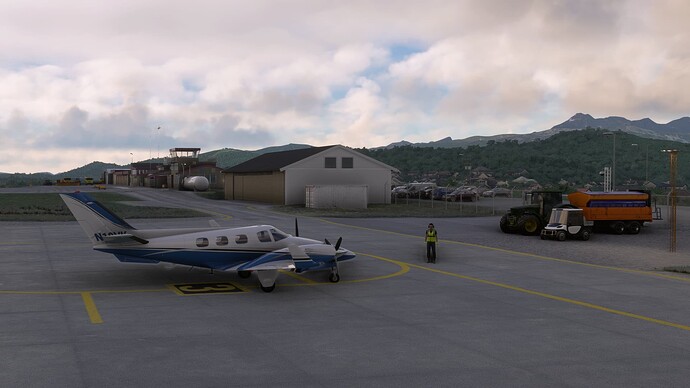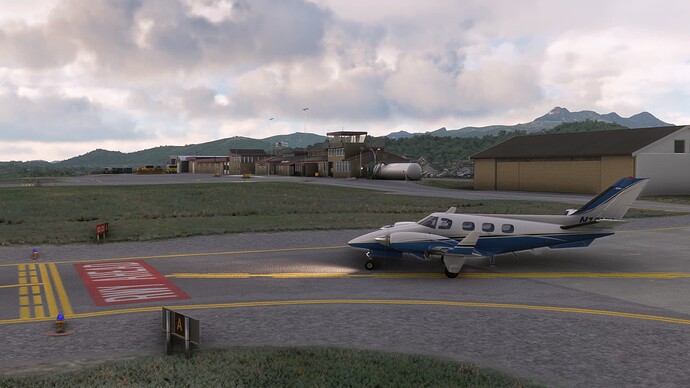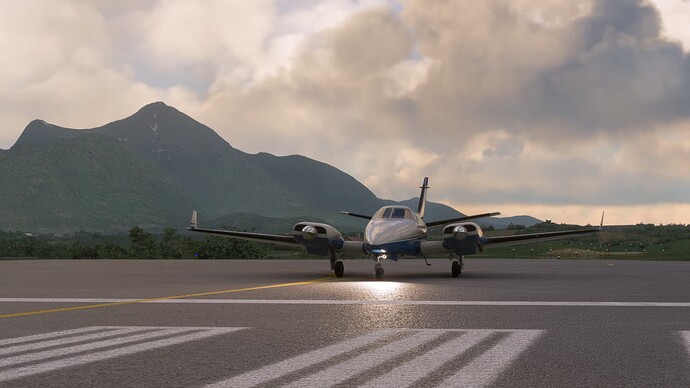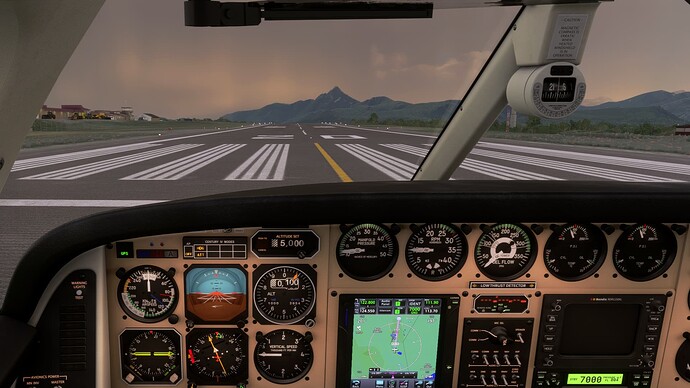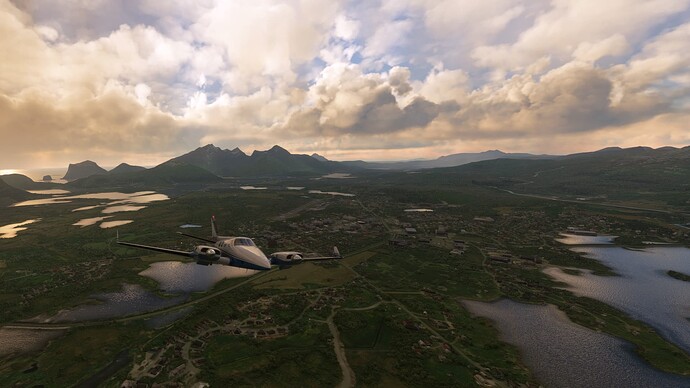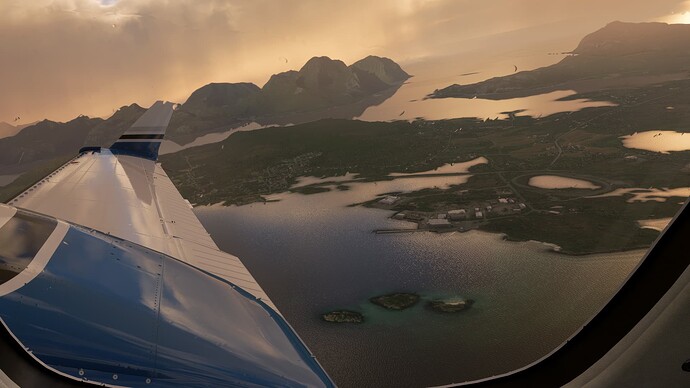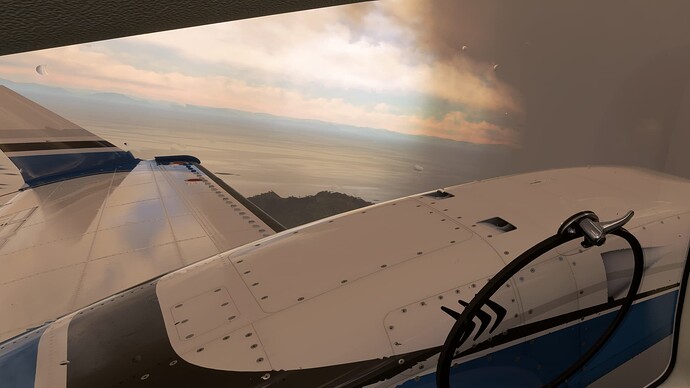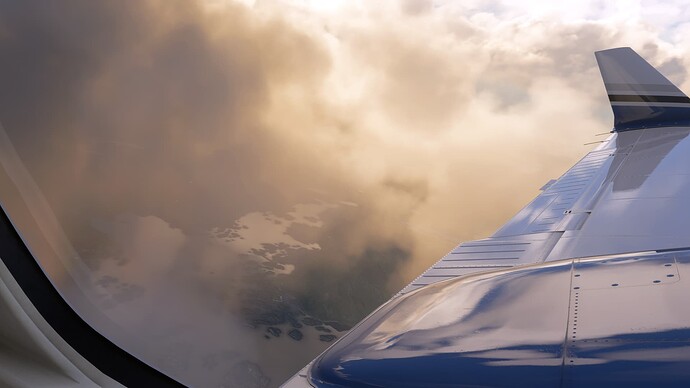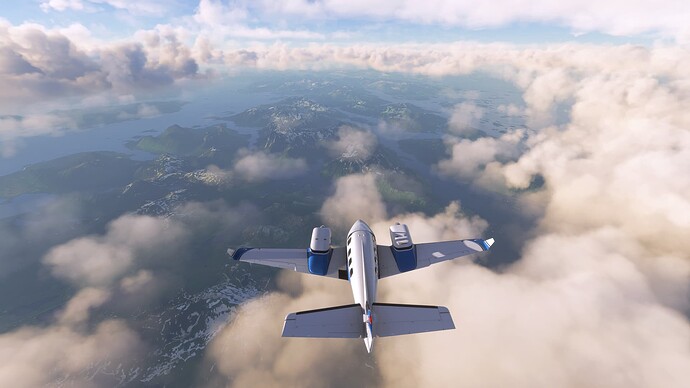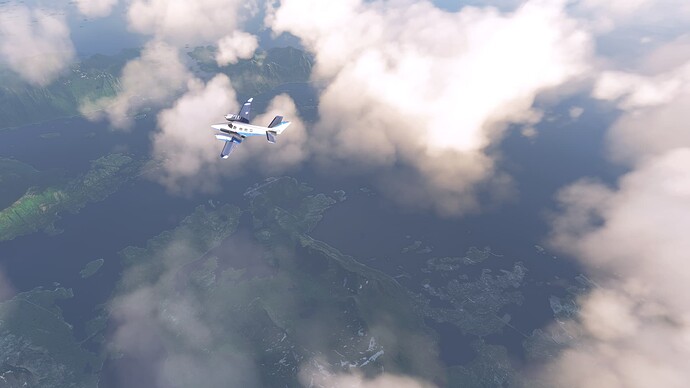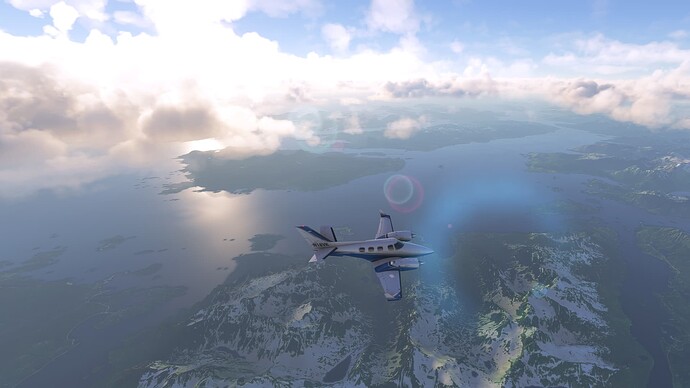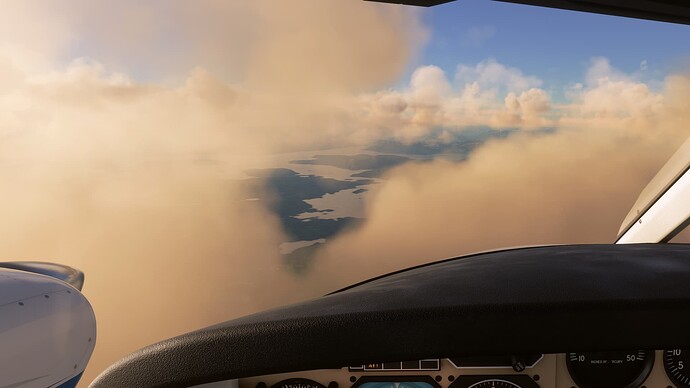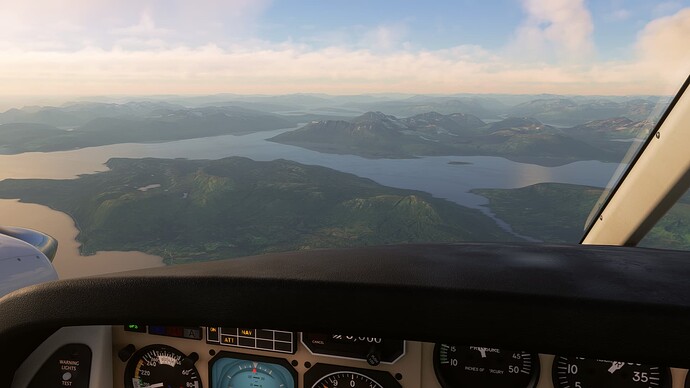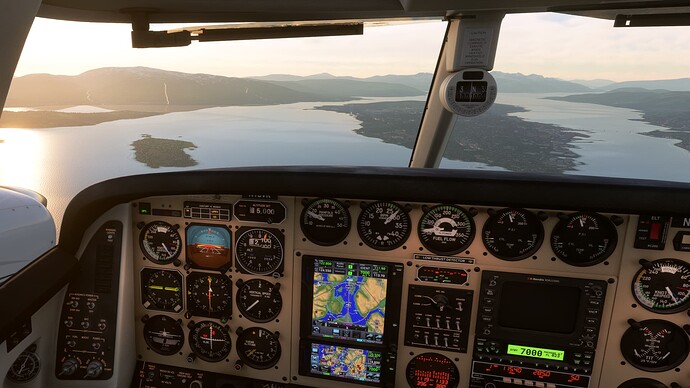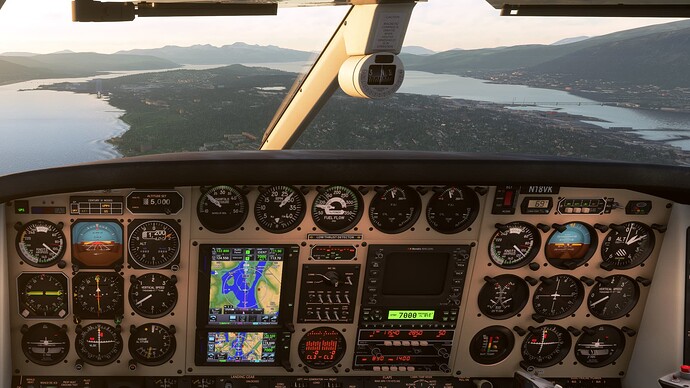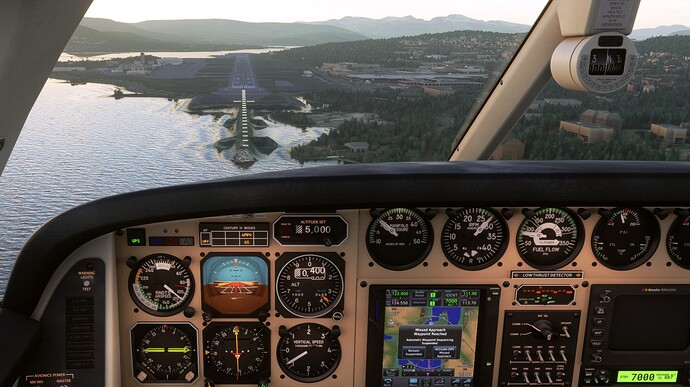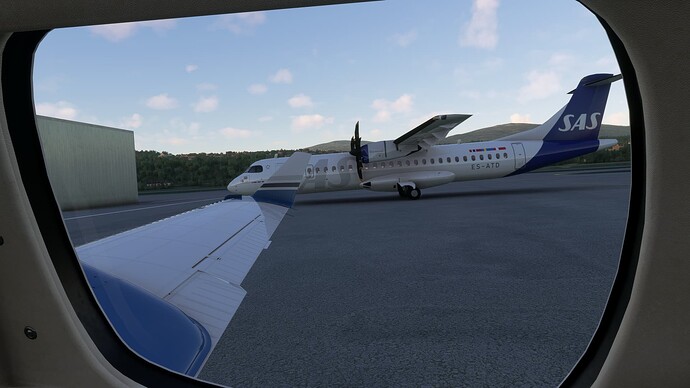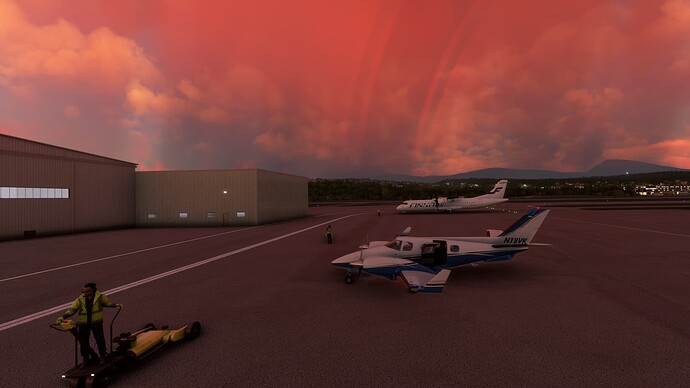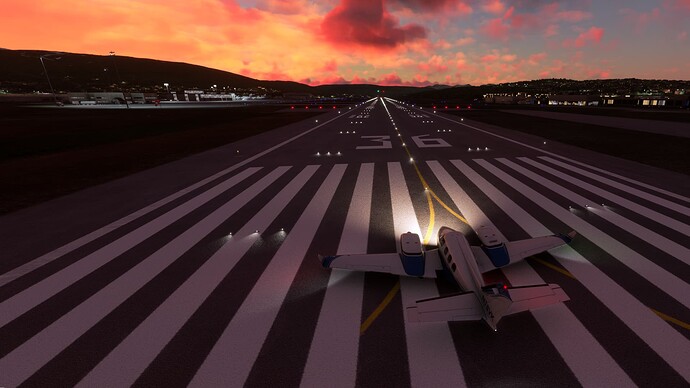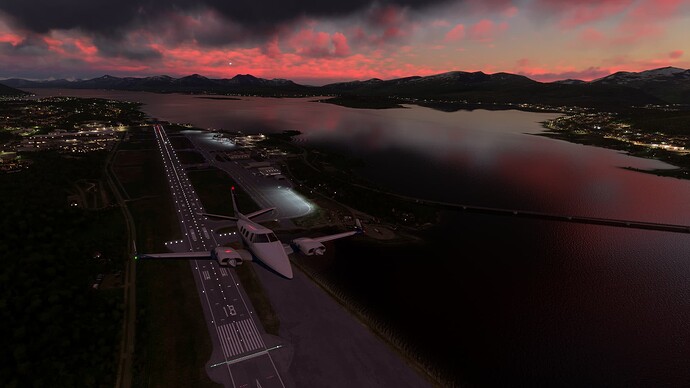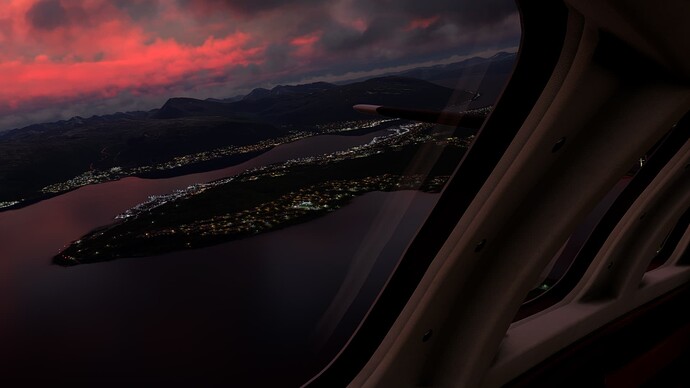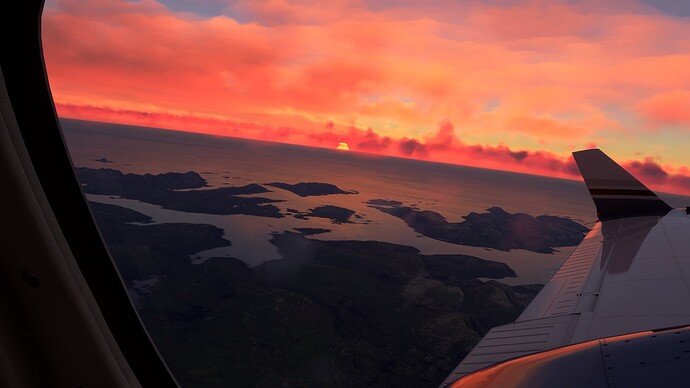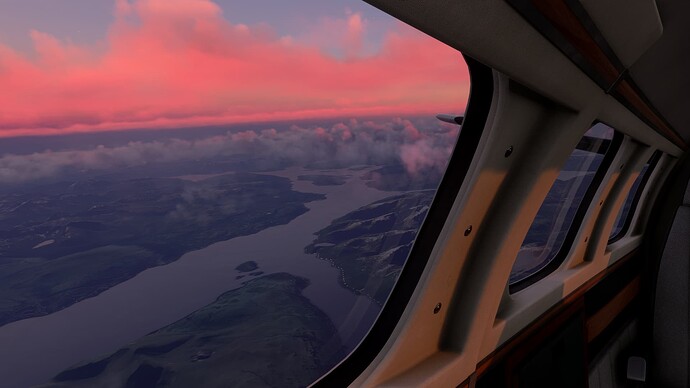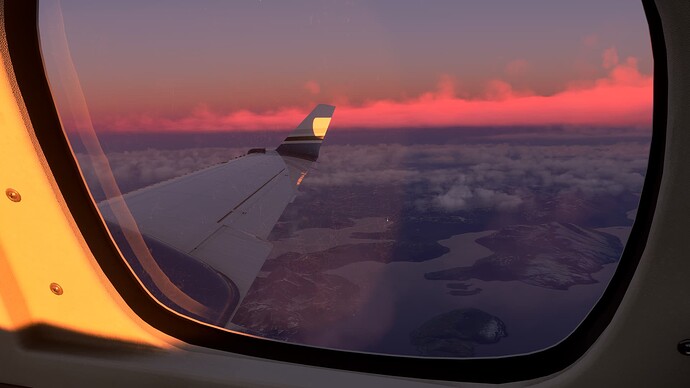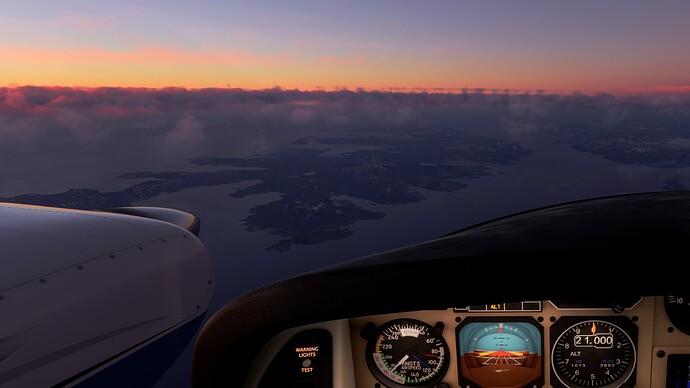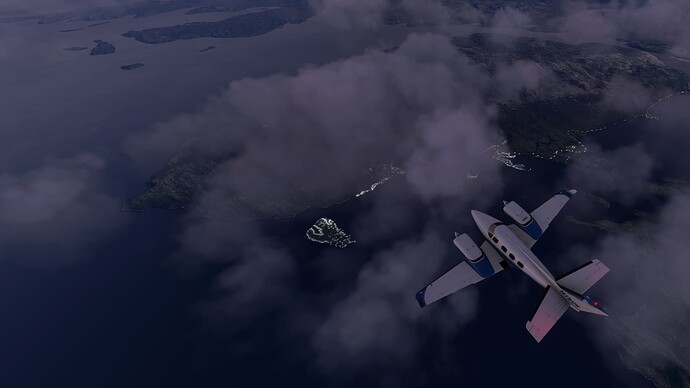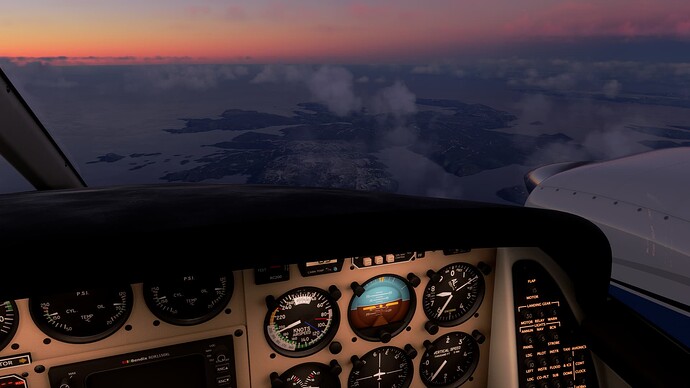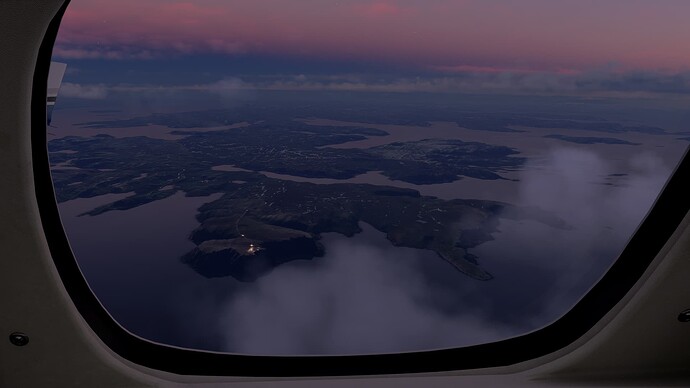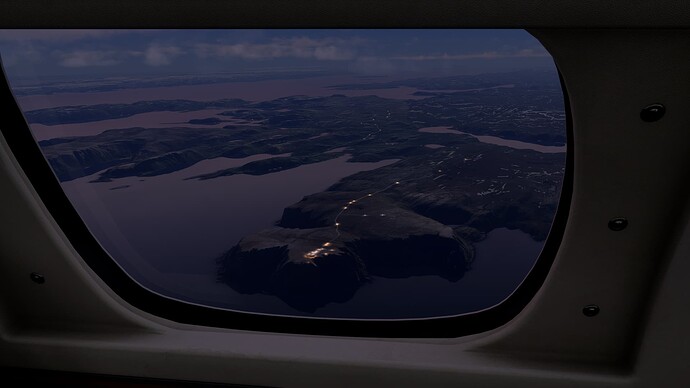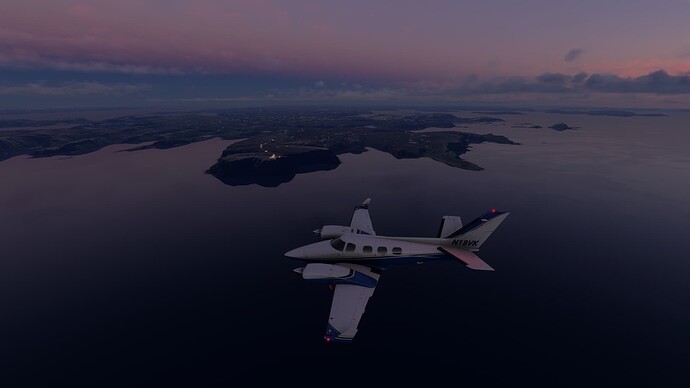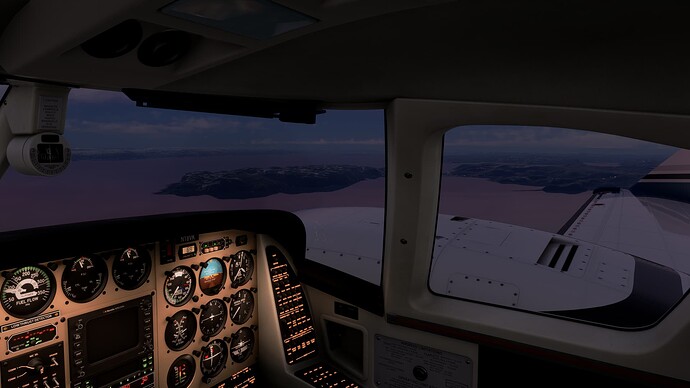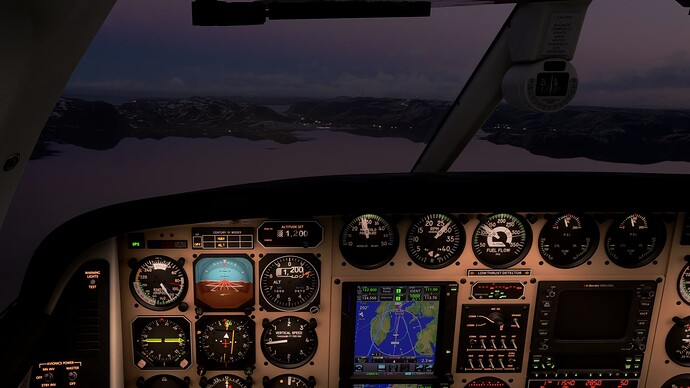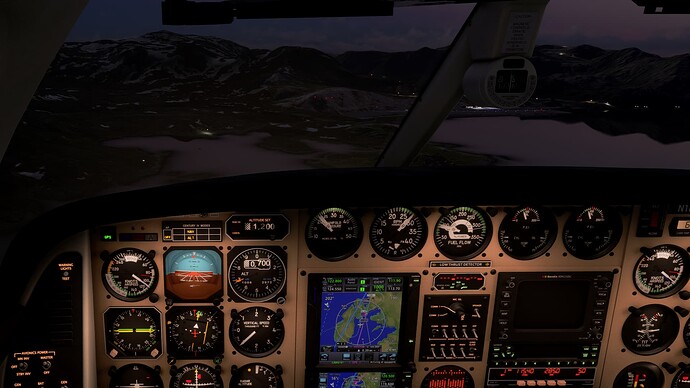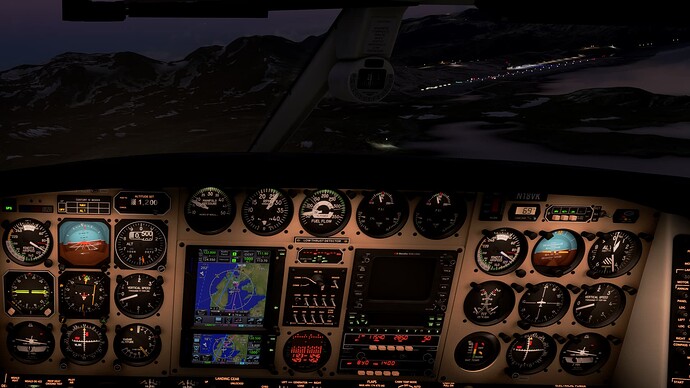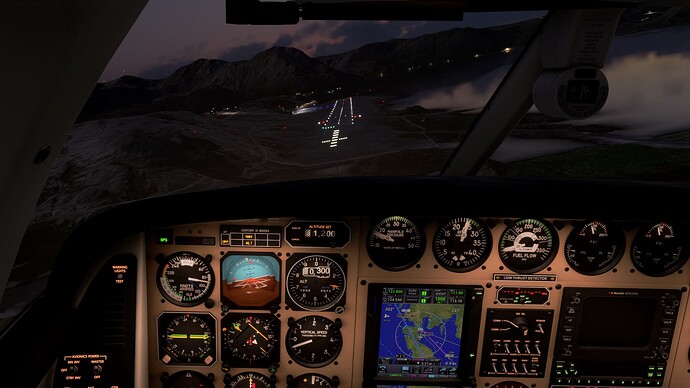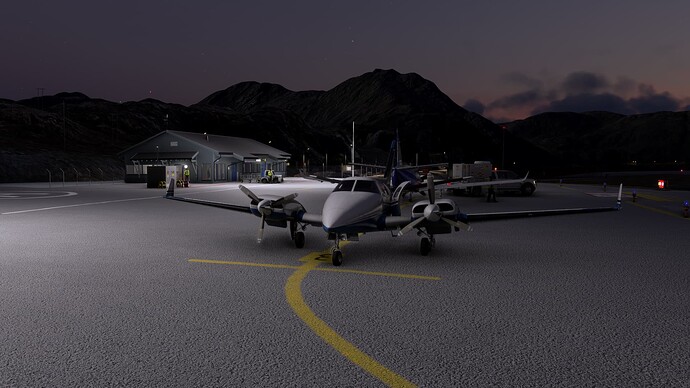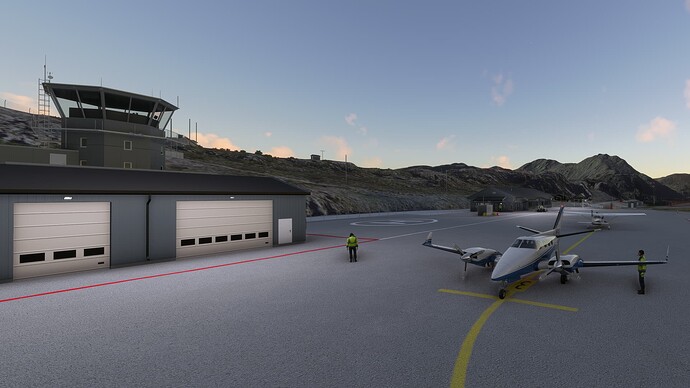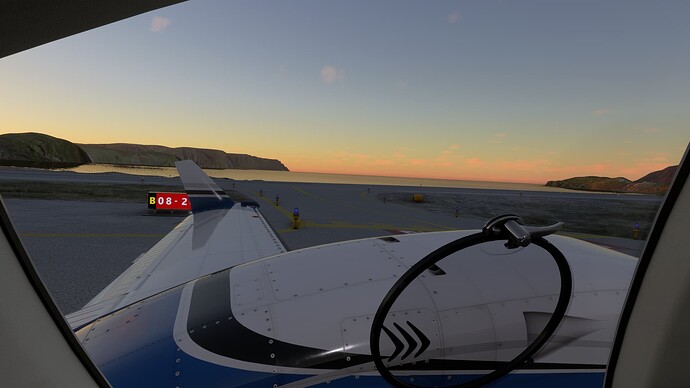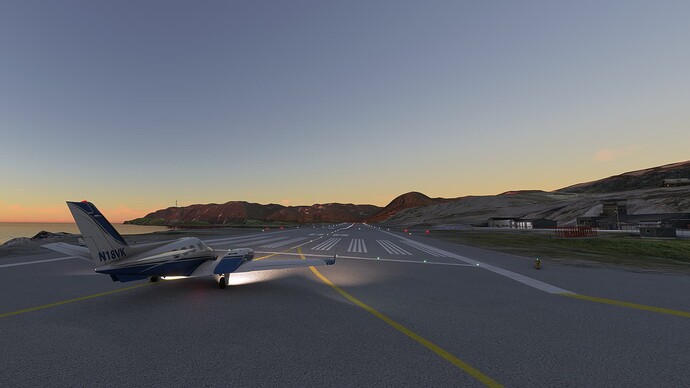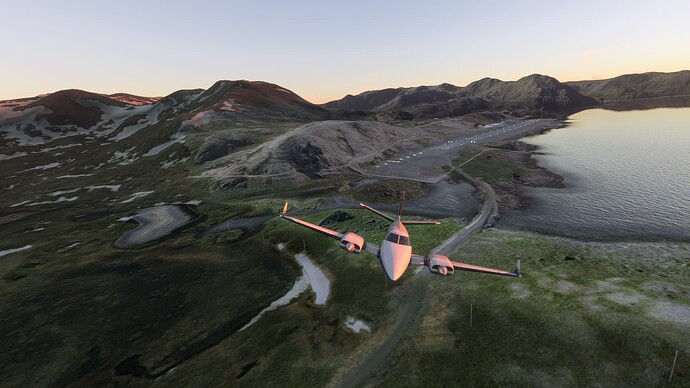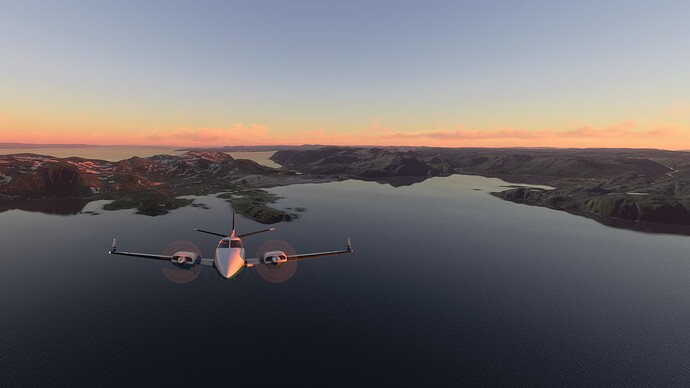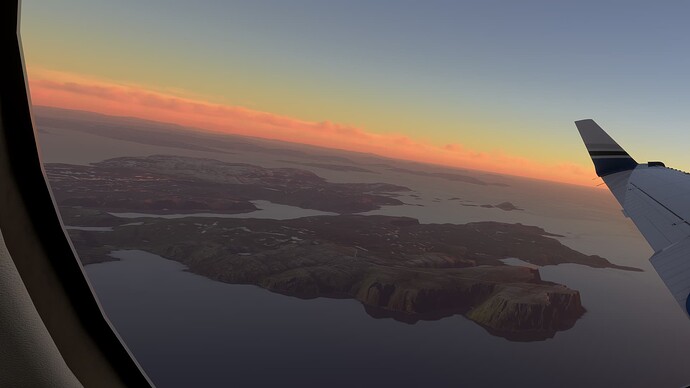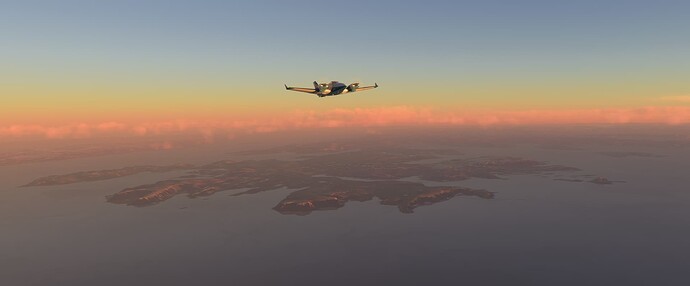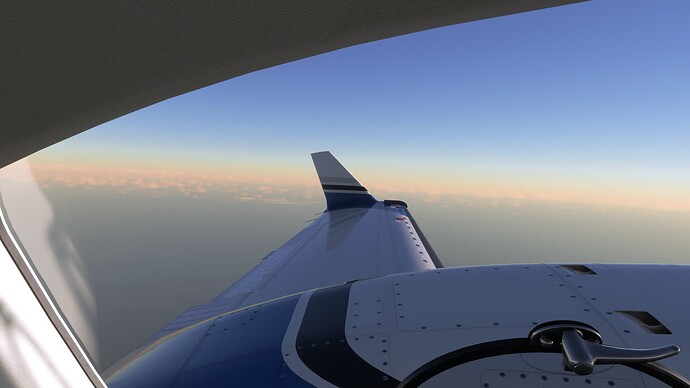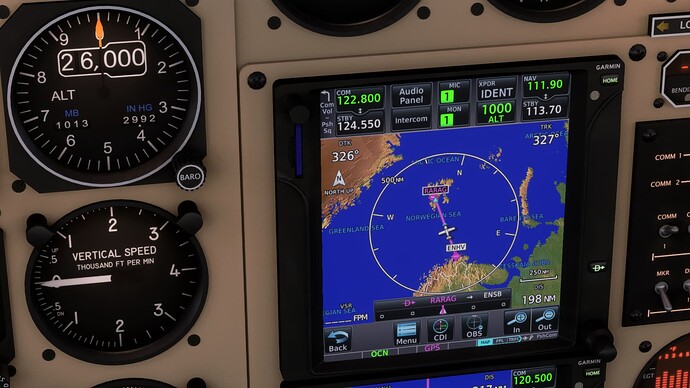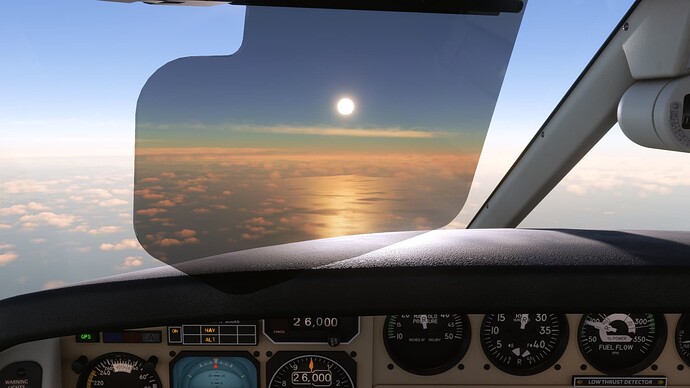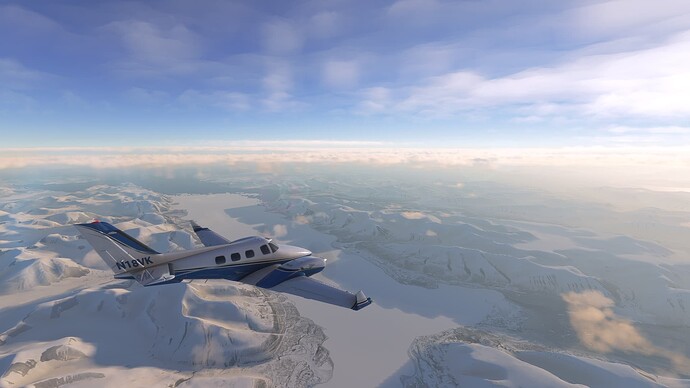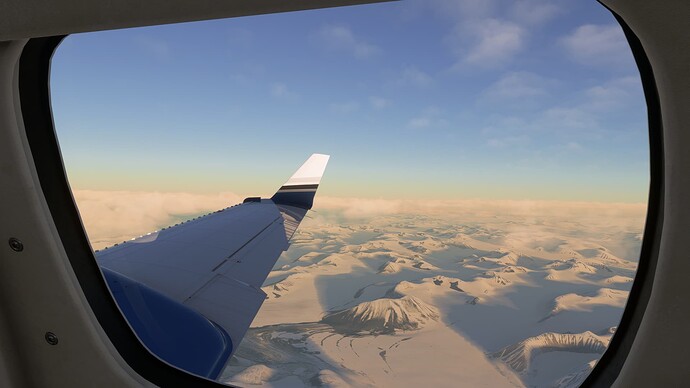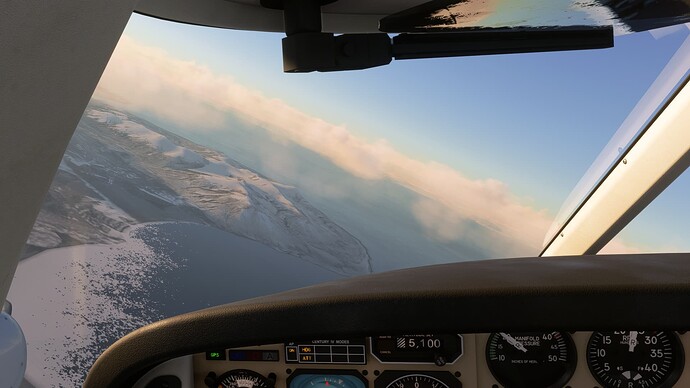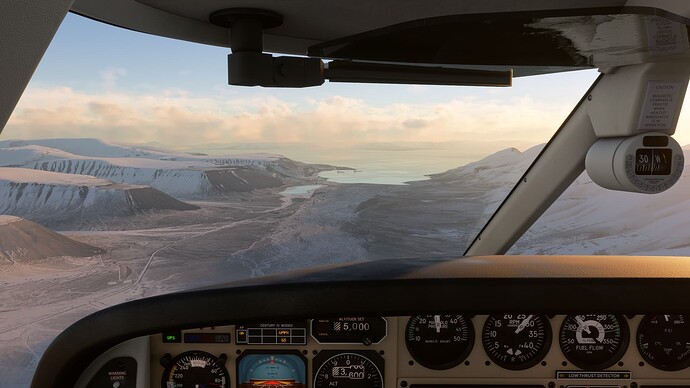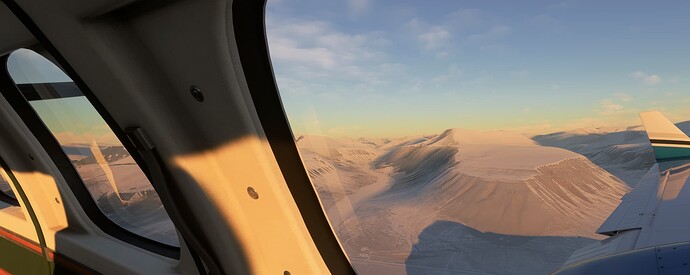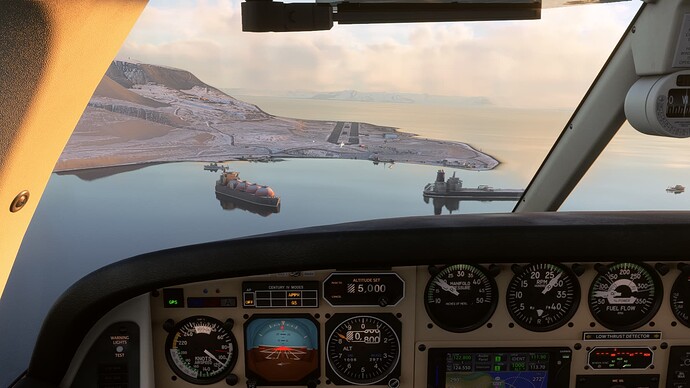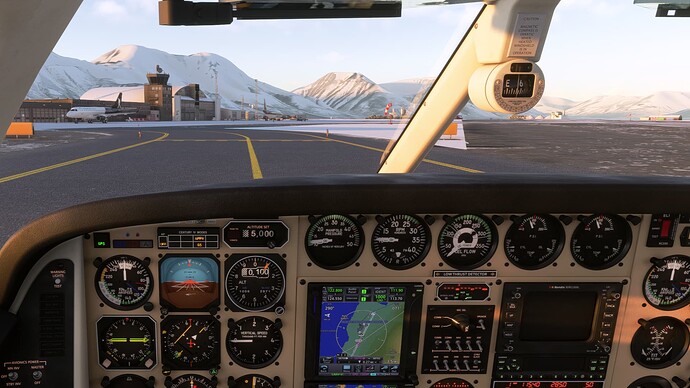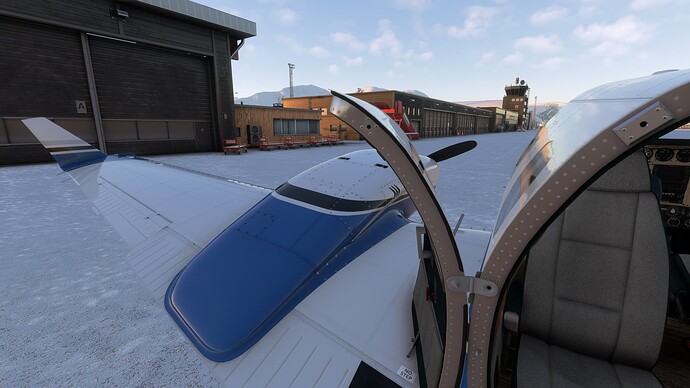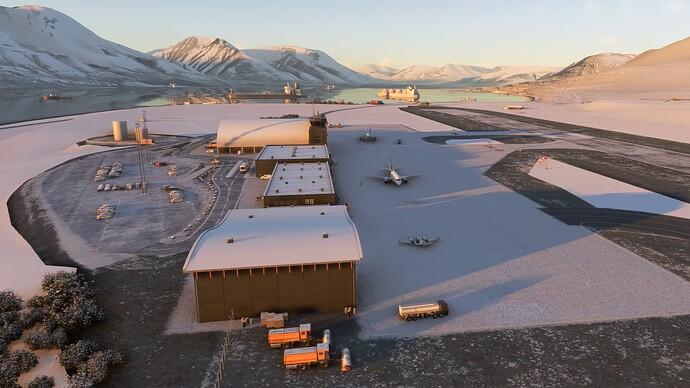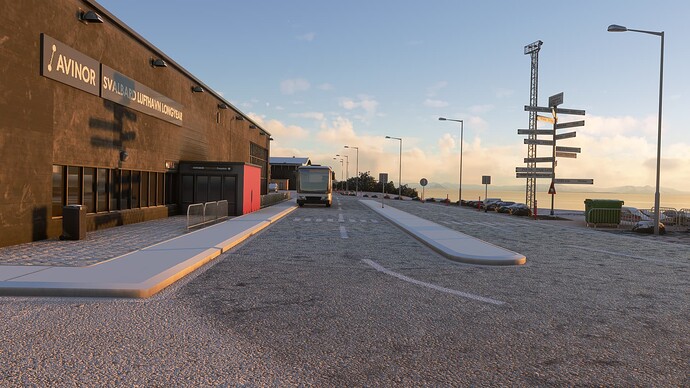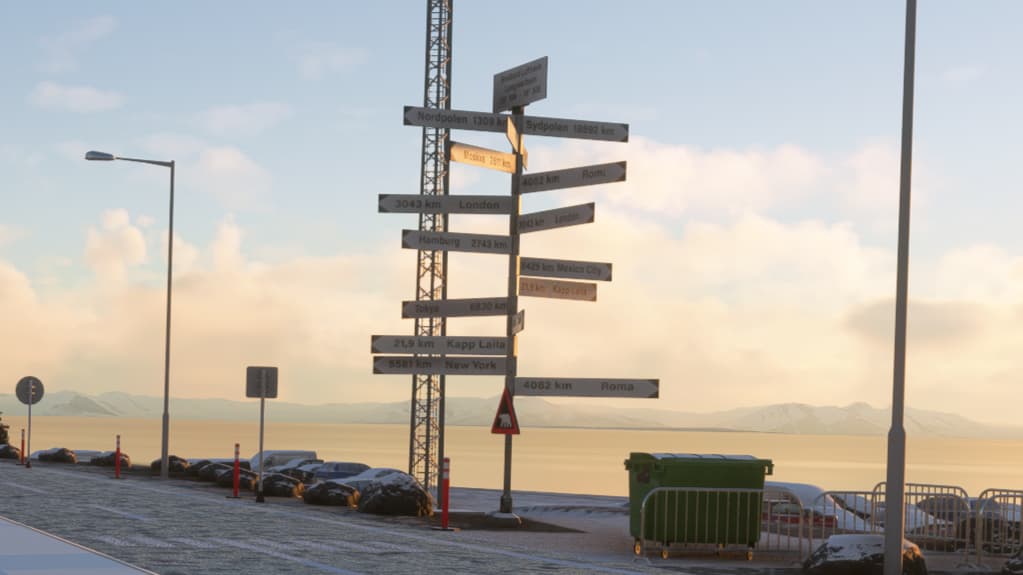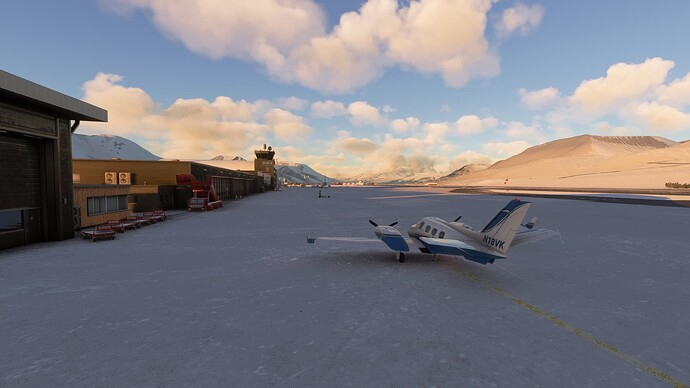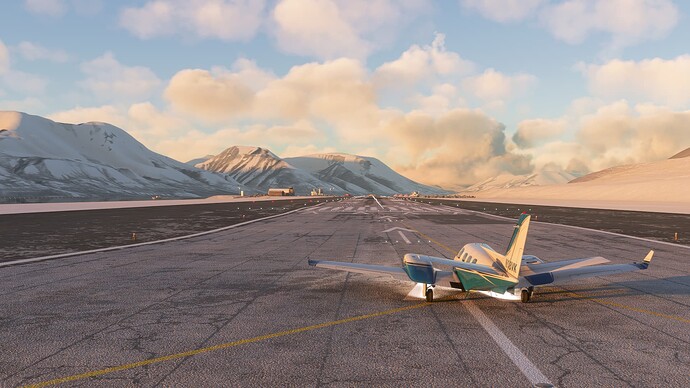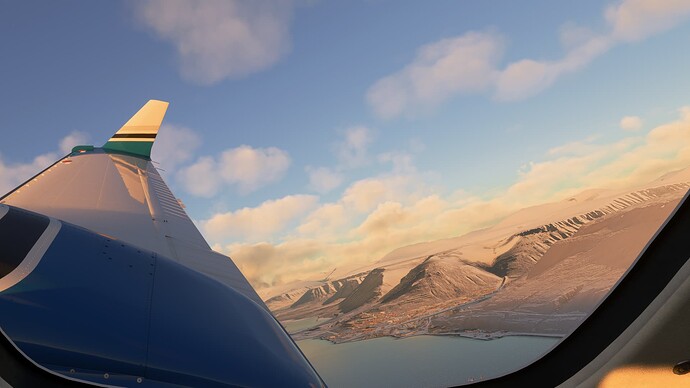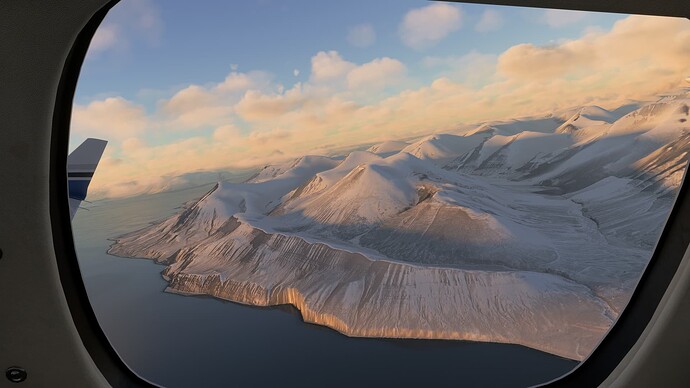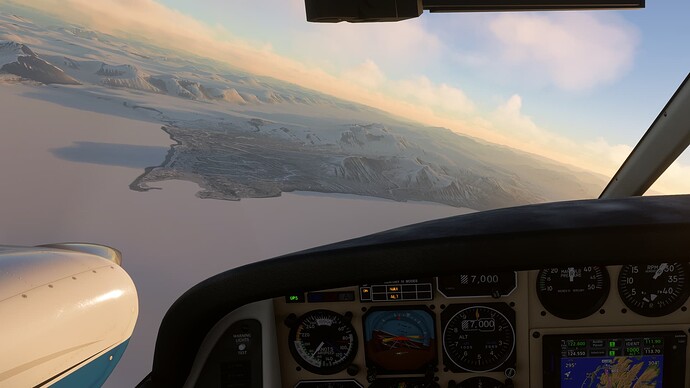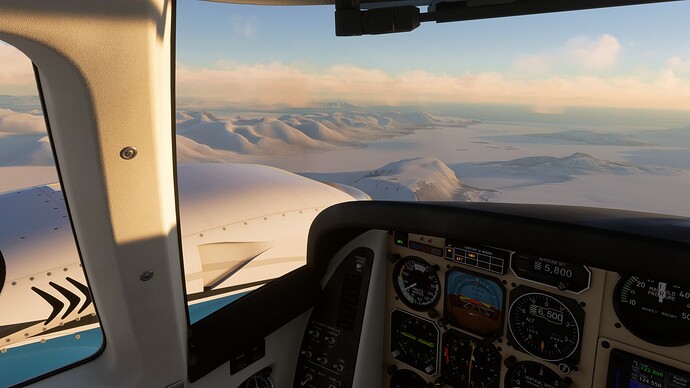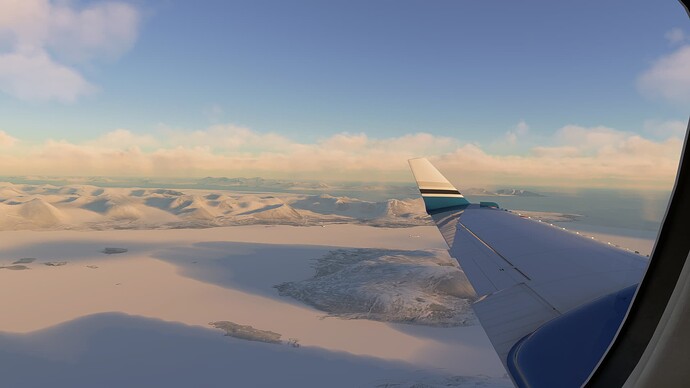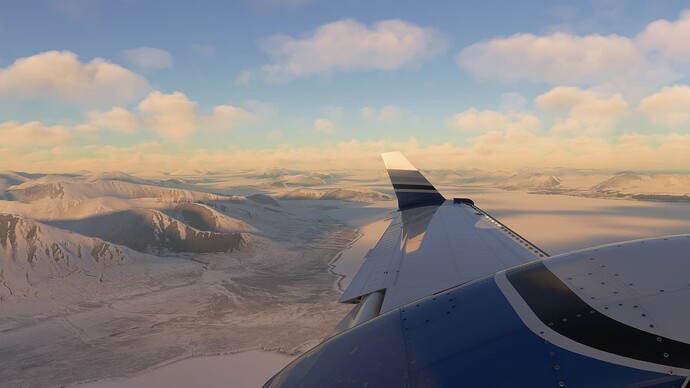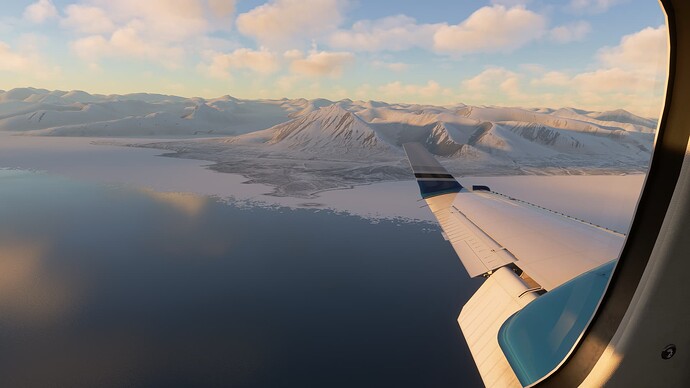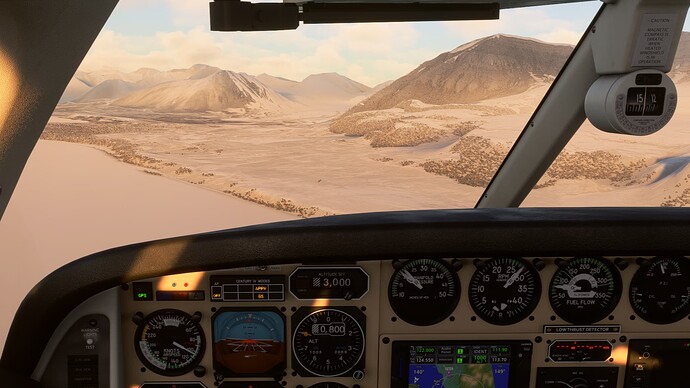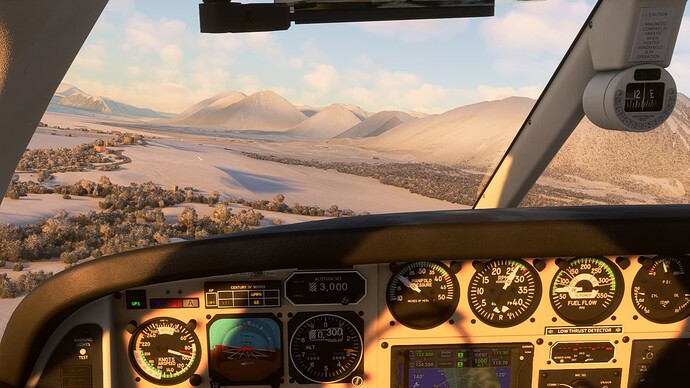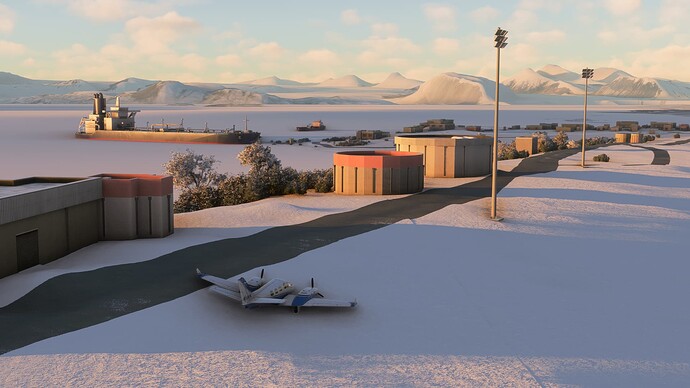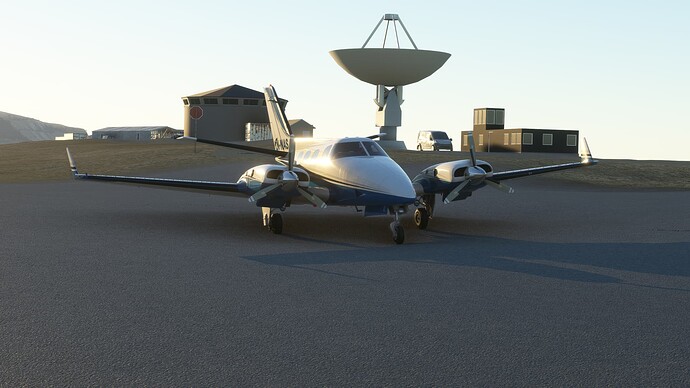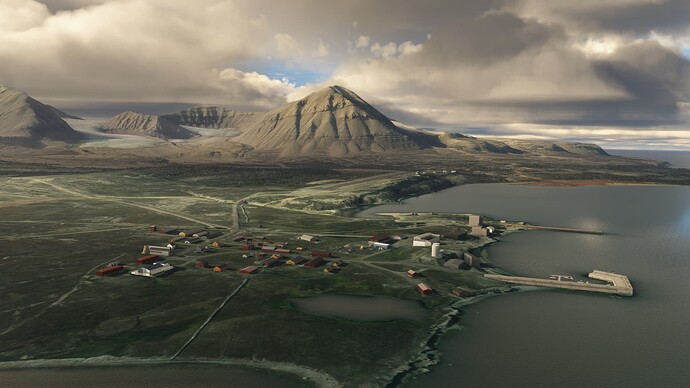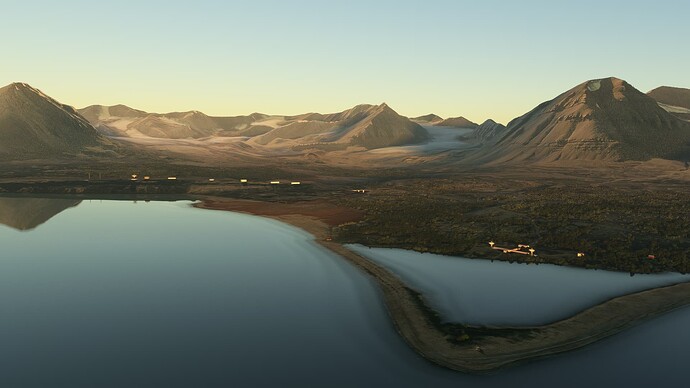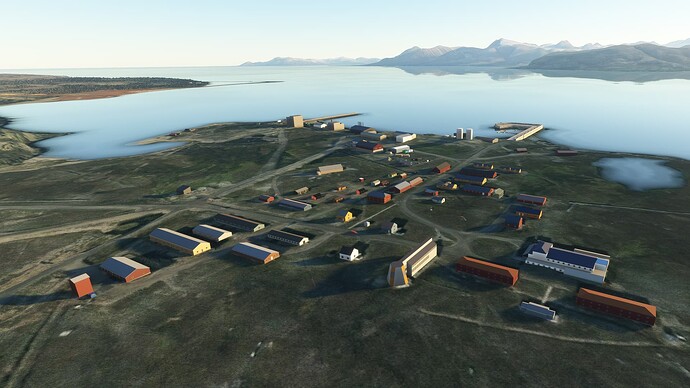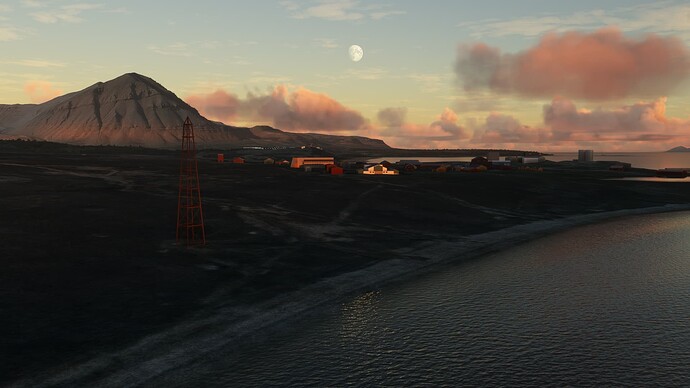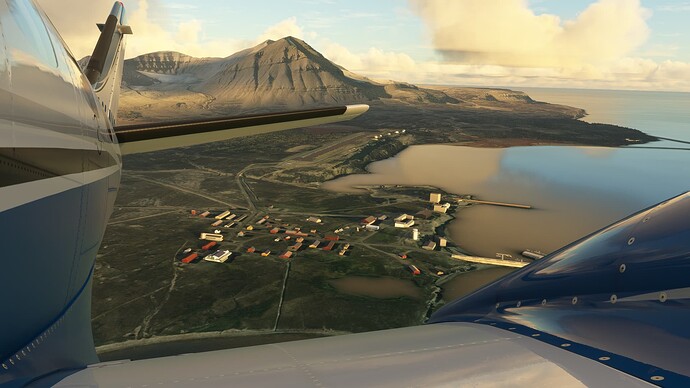I just had one of the most memorable flights I’ve done for a while. Memorable for the scenery – but also for an unexpected challenge that arose during the flight.
I’m really enjoying the recently released Piston Duke, and this time of year, I like flying in Norway because it stays light so long. I usually fly in the evenings, so this gives me a chance to fly in real time and still see daylight.
I planned a flight from Oslo ENGM to Ålesund ENAL, about one hour in the Duke. Sunset in Oslo is now after 10 pm, and sunset in Ålesund is almost 11 pm. I planned to leave Oslo around 9:30 pm, so the whole flight would be comfortably in daylight.
The weather looked to be great – just some light clouds, so I was expecting great views. After firing up the two big Lycomings, I taxied out from the GA apron to runway 19R and took off.
Here’s the view from the passenger cabin on climbout:
I’d love to be in that seat for real some time – one row further forward would be even better of course.
Continuing the climb, I had some beautiful views of the scenery, as expected:
Level now at FL 220 and some great views of the Norwegian glaciers:
Before starting my descent, I checked the weather again. The TAF was still forecasting CAVOK, but the METAR painted a different picture. Fog with 1200 meters visibility and a ceiling of 200 feet overcast. Right at the minimums for the ILS approach into runway 24 that I was planning for. The weather around me was still clear, so it seemed as if marine fog was moving in to Ålesund.
My attention suddenly shifted from viewing the scenery to thinking about where I might divert. My planned alternate was to go all the way back to Oslo – but I would like to get closer to my destination if I could. Oslo to Ålesund by car is seven hours instead of one hour in the Duke.
I checked the weather for Sandane ENSD. Closer to Ålesund but located further inland, it was reporting CAVOK. I kept this in mind as an option for a diversion.
In the meantime, however, it was time to start the descent.
I believe the fjord to the right of the windshield post is the Storfjord, with the town of Stranda just behind the bend. They make good ham and other spekemat there.
The views from the cabin were still gorgeous.
I continued to think about what I might do if I had to go missed at Ålesund, which seemed likely. The TAF had in the meantime been amended:
TAF AMD ENAL 242002Z 2420/2422 26008KT 9999 SCT002 BKN015
TEMPO 2420/2422 0500 FG VV002
I guess they had realized that their previous forecast of CAVOK had been a bit optimistic. But at least they were saying the fog would only be temporary. If I had to go missed, it might be worth trying another approach.
I only had 30 minutes of extra fuel, though. If I did do another approach and had to go missed again, that would probably consume all of my extra fuel and then some. A diversion to my planned alternate of Oslo would then no longer be possible, and I would be committed to going to the closer alternate at Sandane. Before starting a second approach, I would therefore make sure the weather at Sandane was still good enough to divert there.
Getting closer in on the arrival, I started seeing the marine layer that was affecting Ålesund. Further inland, the weather was still great – it was just the coastal regsions that were in the soup. This was going to become interesting.
As I continued the approach, my avionics threw another curveball at me. For some reason, the approach mode on the autopilot would not activate. Fortunately, NAV mode did at least track the localizer, and I flew the glideslope in ATT mode, adjusting my vertical speed by hand to follow the glideslope.
With the altimeter winding down, there was nothing outside but white. 600 feet. 500 feet. 400 feet. I was hair-triggered for the go-around. When I was already preparing to push the power forward, at 300 feet, suddenly the approach lights appeared in front of me. “Continue.”
It was almost disconcerting that I would now have to make a landing. Coming over the threshold, power to idle, hold her off, hold her off… touchdown. Nosewheel down, braking. A taxiline comes into view. Taxi off at taxiway D. Over the hold short line, come to a stop. Collect my thoughts.
Wow. We made it. An approach right down to minimums. I haven’t done many of those in MSFS.
But we’re not done yet. Run the after landing checklist, then make sure we don’t take a wrong turn in the murk. Seems like we were in the sun just moments ago – now everything is dark.
Taxi up on stand 10. Parking brake set. Get everything turned off. Mixtures to cutoff. Magnetos off. Generator off. Battery master off.
Breathe.
